6.1 Problem Solving to Find Entrepreneurial Solutions
Portions of the material in this section are based on original work by Geoffrey Graybeal and produced with support from the Rebus Community. The original is freely available under the terms of the CC BY 4.0 license at https://press.rebus.community/media-innovation-and-entrepreneurship/.

Learning Objectives
By the end of this section, you will be able to:
- Define problem solving in the context of entrepreneurship
- Describe and compare the adaptive model and the innovative model of problem solving
- Identify the skills entrepreneurs need for effective problem solving
- Identify types of problem solvers
As you’ve learned, entrepreneurs often visualize an opportunity gap, a gap between what exists and what could exist, as Hirabayashi and Lidey did with Shine. Entrepreneurial problem solving is the process of using innovation and creative solutions to close that gap by resolving societal, business, or technological problems. Sometimes, personal problems can lead to entrepreneurial opportunities if validated in the market. The entrepreneur visualizes the prospect of filling the gap with an innovative solution that might entail the revision of a product or the creation of an entirely new product. In any case, the entrepreneur approaches the problem-solving process in various ways. This chapter is more about problem solving as it pertains to the entrepreneur’s thought process and approach rather than on problem solving in the sense of opportunity recognition and filling those gaps with new products.
For example, as we read in Identifying Entrepreneurial Opportunity , Sara Blakely (as shown in Figure 6.2 ) saw a need for body contouring and smoothing undergarments one day in the late 1990s when she was getting dressed for a party and couldn’t find what she needed to give her a silhouette she’d be pleased with in a pair of slacks. She saw a problem: a market need. But her problem-solving efforts are what drove her to turn her solution (Spanx undergarments) into a viable product. Those efforts came from her self-admitted can-do attitude: “It’s really important to be resourceful and scrappy—a glass half-full mindset.” 1 Her efforts at creating a new undergarment met resistance with hosiery executives, most of whom were male and out of touch with their female consumers. The hosiery owner who decided to help Blakely initially passed on the idea until running it by his daughters and realizing she was on to something. That something became Spanx , and today, Blakely is a successful entrepreneur. 2
Before getting into the heart of this chapter, we need to make a distinction: Decision making is different from problem solving . A decision is needed to continue or smooth a process affecting the operation of a firm. It can be intuitive or might require research and a long period of consideration. Problem solving , however, is more direct. It entails the solution of some problem where a gap exists between a current state and a desired state. Entrepreneurs are problem solvers who offer solutions using creativity or innovative ventures that exploit opportunities. This chapter focuses on different approaches to problem solving and need recognition that help potential entrepreneurs come up with ideas and refine those ideas.
Two Problem Solving Models: Adaptive and Innovative
There are two prominent established problem-solving models: adaptive and innovative . A renowned British psychologist, Michael Kirton , developed the Kirton Adaption-Innovation (KAI) Inventory to measure an individual’s style of problem solving. 3 Problem-solving preferences are dependent on the personality characteristics of originality, conformity, and efficiency, according to Kirton. The KAI inventory identifies an individual’s problem-solving approach by measuring agreement with statements that align with characteristics, such as the ability to produce many novel ideas, to follow rules and get along in groups, and to systematically orient daily behavior. The results categorize an individual as an innovator or an adaptor. Innovators are highly original, do not like to conform, and value efficiency less than adaptors.
The first and more conservative approach an entrepreneur may use to solve problems is the adaptive model. The adaptive model seeks solutions for problems in ways that are tested and known to be effective. An adaptive model accepts the problem definition and is concerned with resolving problems rather than finding them. This approach seeks greater efficiency while aiming at continuity and stability. The second and more creative approach is the innovative model of entrepreneurial problem solving, which uses techniques that are unknown to the market and that bring advantage to an organization. An innovative problem-solving style challenges the problem definition, discovers problems and avenues for their solutions, and questions existing assumptions—in a nutshell, it does things differently. It uses outside-the-box thinking and searches for novel solutions. Novelty is a shared trait of creative entrepreneurship, and it’s why entrepreneurs gravitate toward this method of problem solving. According to Dr. Shaun M. Powell , a senior lecturer at the University of Wollongong, Australia: “Creative entrepreneurs are notable for a distinctive management style that is based on intuition, informality and rapid decision making, whereas the more conventional thinking styles are not in accord with the unique attributes of creative entrepreneurs.” 4 This way of problem solving doesn’t alter an existing product. It is the creation of something entirely new.
For example, healthcare facilities have long been known as a source of methicillin-resistant Staphylococcus aureus (MRSA), a deadly infection that can have long-term effects on patients. Vital Vio , led by Colleen Costello , has developed white light technology that effectively disinfects healthcare facilities by targeting a molecule specific to bacteria. The light, safe to humans, can burn constantly to kill regenerative bacteria. An adaptive problem-solving model would seek to minimize harm of MRSA within a hospital—to respond to it—whereas the Vital Vio is an entirely new technique that seeks to eliminate it. Adaptive solutions to MRSA include established processes and protocols for prevention, such as having doctors, nurses, and other healthcare providers clean their hands with soap and water, or an alcohol-based hand rub before and after patient care, testing patients to see if they have MRSA on their skin, cleaning hospital rooms and medical equipment, and washing and drying clothes and bed linens in the warmest recommended temperatures. 5
Link to Learning
Visit Inc. Magazine for support and advice for up-and-coming startups to learn more. Examples of how “Dorm Room” entrepreneurs spot and pursue opportunities are shared along with tips and advice for making your startup a success.
Problem-Solving Skills
While identifying problems is a necessary part of the origin of the entrepreneurial process, managing problems is an entirely different aspect once a venture is off the ground and running. An entrepreneur does not have the luxury of avoiding problems and is often responsible for all problem solving in a startup or other form of business. There are certain skills that entrepreneurs possess that make them particularly good problem solvers. Let’s examine each skill (shown in Figure 6.3 ) .
Critical Thinking
Critical thinking is the complex analysis of a problem or issue with the goal of solving the problem or making a decision. The entrepreneur analyzes and peels away the layers of a problem to find the core of an issue facing a business. The entrepreneur focuses on the heart of the problem and responds reasonably and openly to suggestions for solving it. Critical thinking is not only important for developing entrepreneurial ideas: it is a sought-after asset in education and employment. Entrepreneur Rebecca Kantar dropped out of Harvard in 2015 to found the tech startup Imbellus , which aims to replace standardized college admissions tests like the SAT with interactive scenarios that test critical-thinking skills. Many standardized tests may include multiple choice questions asking for the answer to a straightforward knowledge question or math problem. Kantar seeks to create tests that are more concerned with the analytic ability and reasoning that goes into the process of solving the problem. Imbellus says it aims to test “how people think,” not just what they know. The platform, which has not yet launched, will use simulations for its user assessments. 6
Read more about problem solving and EnterpriseWorks/Vita’s story at Harvard Business Review .
Communication
Communication skills , the ability to communicate messages effectively to an intended recipient, are the skills entrepreneurs use to pool resources for the purposes of investigating solutions leading to innovative problem solving and competitive advantage. Good communication allows for the free association of ideas between entrepreneurs and businesses. It can illustrate a problem area or a shared vision, and seeks stakeholder buy-in from various constituencies. Networking and communication within an industry allow the entrepreneur to recognize the position of an enterprise in the market and work toward verbalizing solutions that move an organization beyond its current state. By “verbalizing,” we mean communication from and with the company/entity. Internal communications include company emails, newsletters, presentations, and reports that can set strategic goals and objectives, and report on what has been accomplished and what goals and objectives remain, so that employees within an organization are knowledgeable and can work on solving problems that remain within the organization. External communications could include press releases, blogs and websites, social media, public speeches, and presentations that explain the company’s solutions to problems. They could also be investor pitches complete with business plans and financial projections.
Ideation exercises, such as brainstorming sessions (discussed in Creativity, Innovation, and Invention , are good communication tools that entrepreneurs can use to generate solutions to problems. Another such tool is a hackathon —an event, usually hosted by a tech company or organization, which brings together programmers and workers with other degrees of specialization within the company, community, or organization to collaborate on a project over a short period of time. These can last from twenty-four hours to a few days over a weekend. A hackathon can be an internal company-wide initiative or an external event that brings community participants together. A business model canvas , which is covered in Business Model and Plan and other activities outlined in other chapters can be used internally or externally to identify problems and work toward creating a viable solution.
Networking is an important manifestation of useful communication. What better method is there of presenting one’s concept, gaining funding and buy-in, and marketing for the startup than through building a network of individuals willing to support your venture? A network may consist of potential employees, customers, board members, outside advisors, investors, or champions (people who just love your product) with no direct vested interest. Social networks consist of weak ties and strong ties. Sociologist Mark Granovetter studied such networks back in the 1970s, and his findings still apply today, even if we include social media networks in the definition too. Weak ties facilitate flow of information and community organization, he said, whereas strong ties represent strong connections among close friends, family members, and supportive coworkers. 7 Strong ties require more work to maintain than weak ties (as illustrated by the strong lines and weak dotted lines in Figure 6.4 ) and in a business context, they don’t lead to many new opportunities. Weak ties, in contrast, do open doors in that they act as bridges to other weak ties within functional areas or departments that you might not have had access to directly or through strong ties. 8
In fact, many young entrepreneurs, including tech entrepreneur Oliver Isaacs , realize college is a great place to begin building teams. Isaacs is the founder of viral opinion network Amirite.com , which is widely credited as the place where Internet memes started and online slang got a foothold. 9 Amirite.com consists of a large network of pages and partnerships on Facebook and Instagram that reach 15 million users each month. Isaacs recommends using your alumni network to build a team and customer base for your own venture because you never know if you’re talking to a future employee or partner.
Sharing of ideas and resources is highly valued in the entrepreneurial process. Communication is a vital skill in problem solving because the ability to identify and articulate the problem (define the problem space) is necessary to adequately address a problem. A problem can be too vague or broad or narrow. Thus, communicating the problem is important, as is conveying the solution.
Decisiveness
Decisiveness is as it sounds: the ability to make a quick, effective decision, not letting too much time go by in the process. Entrepreneurs must be productive, even in the face of risk. They often rely on intuition as well as on hard facts in making a choice. They ask what problem needs to be solved, think about solutions, and then consider the means necessary to implement an idea. And the decisions must be informed with research.
For example, as explained in Adam Grant’s book The Originals , the co-founders of Warby Parker, a venture-backed startup focused on the eyewear industry, started their company while they were graduate students. At the time they knew little about the industry, but after conducting some detailed research, they learned that the industry was dominated by one major player—Luxottica. They used this information and other data to refine their strategy and business model (focusing mainly on value, quality, and convenience via an online channel). By the time they decided to launch the business, they had thought through the key details, and they attained rapid early success. Today Warby Parker has over 100 retail stores in the US, is profitable, and is valued at almost $2 billion.
Decisiveness is the catapult to progress. Amazon founder Jeff Bezos preaches the importance of decisiveness throughout his organization. Bezos believes that decisiveness can even lead to innovation. Bezos advocates for making decisions after obtaining 70 percent of the information you need to do so: “Being wrong may be less costly than you think, whereas being slow is going to be expensive for sure,” Bezos wrote in a 2017 annual letter to stockholders. 10
Read this LinkedIn blog post on decisiveness to learn more.
Ability to Analyze Data
Data analysis is the process of analyzing data and modeling it into a structure that leads to innovative conclusions. Identifying Entrepreneurial Opportunity covered much of the sources of data that entrepreneurs might seek. But it is one thing to amass information and statistics. It is another to make sense of that data, to use it to fill a market need or forecast a trend to come. Successful founders know how to pose questions about and make meaning out of information. And if they can’t do that themselves, they know how to bring in experts who can.
In addition to public sources of broad data, a business can collect data on customers when they interact with the company on social media or when they visit the company website, especially if they complete a credit card transaction. They can collect their own specific data on their own customers, including location, name, activity, and how they got to the website. Analyzing these data will give the entrepreneur a better idea about the interested audience’s demographic.
In entrepreneurship, analyzing data can help with opportunity recognition, creation, and assessment by analyzing data in a variety of ways. Entrepreneurs can explore and leverage different data sources to identify and compare “attractive” opportunities, since such analyses can describe what has happened, why it happened, and how likely it is to happen again in the future. In business in general, analytics is used to help managers/entrepreneurs gain improved insight about their business operations/emerging ventures and make better, fact-based decisions.
Analytics can be descriptive, predictive, or prescriptive. Descriptive analytics involves understanding what has happened and what is happening; predictive analytics uses data from past performance to estimate future performance; and prescriptive analytics uses the results of descriptive and predictive analytics to make decisions. Data analysis can be applied to manage customer relations, inform financial and marketing activities, make pricing decisions, manage the supply chain, and plan for human resource needs, among other functions of a venture. In addition to statistical analysis, quantitative methods, and computer models to aid decision-making, companies are also increasingly using artificial intelligence algorithms to analyze data and make quick decisions.
Understanding of Business and Industry
Entrepreneurs need sound understanding of markets and industries. Often times, they are already working in a large organization when they see growth opportunities or inefficiencies in a market. The employee gains a deep understanding of the industry at hand. If the employee considers a possible solution for a problem, this solution might become the basis for a new business.
For example, consider a marketing agency that used traditional marketing for thirty years. This agency had an established clientele. An executive in the organization began studying social media analytics and social media. The executive approached the owner of the business to change processes and begin serving clients through social media, but the owner refused. Clients within the agency began to clamor for exposure on social media. The marketing executive investigated the possibility of building an agency in her locale servicing clients who wish to utilize social media. The marketing executive left the organization and started her own agency (providing, of course, that this is in compliance with any noncompete clauses in her contract). Her competitive advantage was familiarity with both traditional and social media venues. Later, the original agency started floundering because it did not offer social media advertising. Our intrepid executive purchased the agency to gain the clientele and serve those wishing to move away from traditional marketing.
A similar experience occurred for entrepreneur Katie Witkin . After working in traditional marketing roles, the University of Wisconsin-Madison graduate, pictured in Figure 6.5 , left agency life behind four years out of college to cofound her own company, AGW Group . In 2009, Witkin had been interning at a music marketing agency that didn’t have a social media department. She knew, both from her time at college and from observing industry trends, that social media was changing the way companies connected with customers. For her own venture, she expanded the focus to all supporting brands to manage all things digital. Today, the cultural and marketing communications agency has fifteen employees and big-name clients ranging from HBO to Red Bull. 11
Resourcefulness
Resourcefulness is the ability to discover clever solutions to obstacles. Sherrie Campbell , a psychologist, author, and frequent contributor to Entrepreneur magazine on business topics, put it this way:
“There is not a more useful or important trait to possess than resourcefulness in the pursuit of success. Resourcefulness is a mindset, and is especially relevant when the goals you have set are difficult to achieve or you cannot envision a clear path to get to where you desire to go. With a resourcefulness mindset you are driven to find a way. An attitude of resourcefulness inspires out-of-the-box thinking, the generation of new ideas, and the ability to visualize all the possible ways to achieve what you desire. Resourcefulness turns you into a scrappy, inventive and enterprising entrepreneur. It places you a cut above the rest.” 12
Entrepreneurs start thinking about a business venture or startup by talking to people and procuring experts to help create, fund, and begin a business. Entrepreneurs are risk takers, passionate about new endeavors. If they don’t have a college degree or a great deal of business experience, they understand there are many resources available to support them in the endeavor, such as the Service Corps of Retired Executives (SCORE) and the Small Business Administration (SBA) . There are many sources available to fund the business with little or no debt and options, as you will see in the chapter on Entrepreneurial Finance and Accounting . The entrepreneur follows a vision and researches opportunities to move toward a dream.
For example, in the late 1990s, Bill McBean and his business partner Billy Sterett had an opportunity to buy an underperforming auto dealership that would make their company the dominant one in the market. Neither wanting to take cash from other ventures nor wanting to borrow more money and tie themselves to more debt, the entrepreneurs were resourceful by finding another path forward to obtaining the money necessary for the acquisition they both coveted. They changed banks and renegotiated their banking payback requirements, lowering their interest payments, reducing fees, and lowering their monthly payments, ultimately freeing up a significant amount of cash that allowed them to buy the new company. 13
Types of Problem Solvers
Entrepreneurs have an insatiable appetite for problem solving. This drive motivates them to find a resolution when a gap in a product or service occurs. They recognize opportunities and take advantage of them. There are several types of entrepreneurial problem solvers, including self-regulators, theorists, and petitioners.
Self-Regulating Problem Solvers
Self-regulating problem solvers are autonomous and work on their own without external influence. They have the ability to see a problem, visualize a possible solution to the problem, and seek to devise a solution, as Figure 6.6 illustrates. The solution may be a risk, but a self-regulating problem solver will recognize, evaluate, and mitigate the risk. For example, an entrepreneur has programmed a computerized process for a client, but in testing it, finds the program continually falls into a loop, meaning it gets stuck in a cycle and doesn’t progress. Rather than wait for the client to find the problem, the entrepreneur searches the code for the error causing the loop, immediately edits it, and delivers the corrected program to the customer. There is immediate analysis, immediate correction, and immediate implementation. The self-regulating problem solvers’ biggest competitive advantage is the speed with which they recognize and provide solutions to problems.
Theorist Problem Solvers
Theorist problem solvers see a problem and begin to consider a path toward solving the problem using a theory. Theorist problem solvers are process oriented and systematic. While managers may start with a problem and focus on an outcome with little consideration of a means to an end, entrepreneurs may see a problem and begin to build a path with what is known, a theory, toward an outcome. That is, the entrepreneur proceeds through the steps to solve the problem and then builds on the successes, rejects the failures, and works toward the outcome by experimenting and building on known results. At this point, the problem solver may not know the outcome, but a solution will arise as experiments toward a solution occur. Figure 6.7 shows this process.
For example, if we consider Marie Curie as an entrepreneur, Curie worked toward the isolation of an element. As different approaches to isolating the element failed, Curie recorded the failures and attempted other possible solutions. Curie’s failed theories eventually revealed the outcome for the isolation of radium. Like Curie, theorists use considered analysis, considered corrective action, and a considered implementation process. When time is of the essence, entrepreneurs should understand continual experimentation slows the problem-solving process.
Petitioner Problem Solvers
Petitioner problem solvers ( Figure 6.8 ) see a problem and ask others for solution ideas. This entrepreneur likes to consult a person who has “been there and done that.” The petitioner might also prefer to solve the problem in a team environment. Petitioning the entrepreneurial team for input ensures that the entrepreneur is on a consensus-driven path. This type of problem solving takes the longest to complete because the entrepreneur must engage in a democratic process that allows all members on the team to have input. The process involves exploration of alternatives for the ultimate solution. In organizational decision-making, for example, comprehensiveness is a measure of the extent a firm attempts to be inclusive or exhaustive in its decision-making. Comprehensiveness can be gauged by the number of scheduled meetings, the process by which information is sought, the process by which input is obtained from external sources, the number of employees involved, the use of specialized consultants and the functional expertise of the people involved, the years of historical data review, and the assignment of primary responsibility, among other factors. Comprehensive decision-making would be an example of a petitioner problem-solving style, as it seeks input from a vast number of team members.
A charette —a meeting to resolve conflicts and identify solutions—is another example that employs a petitioner problem-solving approach. Often times, a developer of a new project might hold a community charette to aid in the design of a project, hoping to gain approval from elected officials. In the building example, this could consist of the developer and his team of architects, project designers, and people with expertise in the project working alongside community members, business executives, elected officials, or representatives like staff members or citizen-appointed boards like a planning board. Such an activity is representative of a petitioner problem-solving approach, as opposed to a developer representative designing the project with no input from anyone else.
In summary, there is no right or wrong style of problem solving; each problem solver must rely on the instincts that best drive innovation. Further, they must remember that not all problem-solving methods work in every situation. They must be willing to adapt their own preference to the situation to maximize efficiency and ensure they find an effective solution. Attempting to force a problem-solving style may prevent an organization from finding the best solution. While general entrepreneurial problem-solving skills such as critical thinking, decisiveness, communication, and the ability to analyze data will likely be used on a regular basis in your life and entrepreneurial journey, other problem-solving skills and the approach you take will depend on the problem as it arises.
There are a number of resources online that can help analyze your problem-solving abilities. Mindtools.com is one such resource. These are useful to learn your general problem-solving tendencies before being called upon to apply them in a real-world setting. One of the problem-solving techniques available from mindtools.com offers that problems can be addressed from six different perspectives. Called CATWOE , the approach is an acronym for Customers, Actors (people within the organization), Transformative, Worldwide, Owner, and Environment (organizational).
Learn more about the CATWOE technique for problem solving.
- 1 Helen Lock. “‘I Put My Butt on the Line’: How Spanx Took Over the World.” The Guardian. July 11, 2016. https://www.theguardian.com/small-business-network/2016/jul/11/put-butt-on-the-line-how-spanx-world
- 2 Gary Keller. “Business Success Series, Part 1: Sara Blakely-Spanx.” The One Thing. n.d. https://www.the1thing.com/blog/the-one-thing/business-success-series-part-1-sara-blakely-spanx/
- 3 “Characteristics of Adaptors and Innovators.” Kirton KAI Inventory Tool . n.d. http://pubs.acs.org/subscribe/archive/ci/31/i11/html/11hipple_box3.ci.html
- 4 Shaun Powell. “The Management and Consumption of Organisational Creativity.” Journal of Consumer Marketing 25, no. 3 (2008): 158–166.
- 5 N.C Healthcare-Associated Infections Prevention Program. Healthcare-Associated Infections in North Carolina: 2014 Annual Report, Healthcare Consumer Version. April 2015. https://epi.dph.ncdhhs.gov/cd/hai/figures/hai_apr2015_consumers_annual.pdf
- 6 Romesh Ratnesar. “What If Instead of Taking the SAT You Got to Play a Video Game?” Bloomberg BusinessWeek. March 19, 2019. https://www.bloomberg.com/news/features/2019-03-19/a-harvard-dropout-s-plan-to-fix-college-admissions-with-video-games
- 7 Mark Granovetter. “The Strength of Weak Ties.” American Journal of Sociology 5 (1973): 1360–1380.
- 8 Jacob Morgan. “Why Every Employee Should Be Building Weak Ties at Work.” Forbes. March 11, 2014. https://www.forbes.com/sites/jacobmorgan/2014/03/11/every-employee-weak-ties-work/#277851063168
- 9 John White. “Top UK Influencer Oliver Isaacs Reveals What It Takes to Go Viral.” Inc . August 6, 2017. https://www.inc.com/john-white/top-uk-influencer-oliver-isaacs-reveals-what-it-ta.html
- 10 Erik Larson. “How Jeff Bezos Uses Faster Better Decisions to Keep Amazon Innovating.” Forbes . September 24, 2018. https://www.forbes.com/sites/eriklarson/2018/09/24/how-jeff-bezos-uses-faster-better-decisions-to-keep-amazon-innovating/#492c351b7a65
- 11 Stephanie Schomer. “How Getting Laid Off Empowered This Entrepreneur to Start Her Own Award-Winning Marketing Agency.” Entrepreneur. January 15, 2019. https://www.entrepreneur.com/article/326212
- 12 Sherrie Campbell. “6 Characteristics of Resourceful People That Bring Them Success.” Entrepreneur. March 10, 2016. https://www.entrepreneur.com/article/272171
- 13 “Resourcefulness Is More Important Than Resources.” The Ecommerce Mindset: How Successful Store Owners Think. n.d. https://www.oberlo.com/ebooks/mindset/resourceful-entrepreneur
As an Amazon Associate we earn from qualifying purchases.
This book may not be used in the training of large language models or otherwise be ingested into large language models or generative AI offerings without OpenStax's permission.
Want to cite, share, or modify this book? This book uses the Creative Commons Attribution License and you must attribute OpenStax.
Access for free at https://openstax.org/books/entrepreneurship/pages/1-introduction
- Authors: Michael Laverty, Chris Littel
- Publisher/website: OpenStax
- Book title: Entrepreneurship
- Publication date: Jan 16, 2020
- Location: Houston, Texas
- Book URL: https://openstax.org/books/entrepreneurship/pages/1-introduction
- Section URL: https://openstax.org/books/entrepreneurship/pages/6-1-problem-solving-to-find-entrepreneurial-solutions
© Jan 4, 2024 OpenStax. Textbook content produced by OpenStax is licensed under a Creative Commons Attribution License . The OpenStax name, OpenStax logo, OpenStax book covers, OpenStax CNX name, and OpenStax CNX logo are not subject to the Creative Commons license and may not be reproduced without the prior and express written consent of Rice University.
- Product Launch
- Scaling Impact
- B2B SaaS Course
- Product-Market Fit
- AI Strategy
Identifying Problems Worth Solving: A Guide for Entrepreneurs

- October 9, 2023

In the world of entrepreneurship, success often hinges on the ability to identify and solve the right problems worth solving. However, tackling an issue without fully understanding its worth can lead to wasted time and resources. This blog post will guide you through the process of determining which problems are worth solving and how to address them effectively, ensuring a greater likelihood of success in your entrepreneurial journey of building better software or SaaS solutions.
Key Takeaways
- Identify and reframe problems worth solving through research, observation, customer conversations and collaborative problem-solving techniques.
- Evaluate market demand to ensure successful solutions by leveraging technology and resources.
- Build trust with customers by providing consistent problem-solving strategies that create value.
Understanding the Essence of a Problem Worth Solving
As an entrepreneur, it’s vital to focus on problems that meet certain criteria, such as establishing an emotional connection with customers, demonstrating market potential, and being realistically solvable. A profound understanding of these aspects can help you create solutions that address the genuine problems your target customers face, ultimately leading to a more successful and impactful business.

Determining if a problem is worth solving involves considering diverse approaches and perspectives, analyzing potential impacts, and understanding the reasons the market has failed to address the problem. This process, known as idea extraction, involves interviewing individuals in a market about the difficulties they face to identify a problem they are willing to pay to have solved, thus improving the customer’s circumstances.
Emotional Connection
Emotionally connecting to a problem involves understanding and empathizing with the feelings and experiences associated with the issue. By recognizing the emotional motivations behind customer issues, more effective solutions can be developed, resulting in greater customer value. For instance, Slack identified the need for a sense of community, meaning, and shared purpose in workplace communication and developed a tool that encourages inclusive communication and discussion around common objectives.

Forming an emotional bond with the problem can spark motivation and ignite creative solutions. This approach ensures that entrepreneurs not only address the superficial aspects of a problem but also tackle its underlying emotional drivers, leading to a more profound and lasting impact on customers.
Pro Tip: People primarily take action for emotional reasons NOT logical ones. Logic prevails in the end, but emotional reactions are the primary driver for action. As such, it’s important that you know what emotional drivers are motivating users and customers to take action.
Market Potential
Assessing the market size and its potential to expand becomes important when determining if a problem requires a solution. One way to gauge market potential is by examining the amount of money customers are currently spending to address the issue. This helps us better understand important context around how motivated customers are to solve the problem and the impact that it’s causing to their business operations.

Focus your research in these areas:
- Thoroughly research their target market
- Identify gaps in the existing solutions offered by competitors
- Ensure that their proposed solution addresses a genuine customer need
- Ensure that their proposed solution has the potential to capture a significant market share.
Solvability
A problem worth solving must be feasible to resolve, have an emotional connection, and demonstrate commercial viability. Solvability comprises a critical component of this equation. I followed this exact strategy to bring my B2B SaaS product Podcast Show Notes to market. This software leverages AI to automate the creation of show notes for podcast episodes using AI. Before building this product, I validated it as both a problem worth solving and a commercially viable solution by selling it and developing an MVP before investing more significantly and building out the entire application.
Breaking down complex issues into individual elements by drilling down to root causes can render them more accessible and solvable. By considering the feasibility of a solution and the resources needed to implement it, entrepreneurs can ensure that their efforts are directed towards problems that can be realistically solved and have a meaningful impact on customers’ circumstances. This approach allows problem solvers to focus on the big idea that can truly make a difference.
Research and Observation: Key Steps in Identifying Problems Worth Solving
Uncovering potential problems worth solving requires a combination of research and observation, which can be achieved through customer conversations, industry analysis, and competitor study. The most promising approach to identify a customer’s problem worth solving is to engage in dialogue with a particular group of customers at the outset of the innovation process, allowing you to better understand their problems and challenges.
Thorough research and observation can help software and SaaS entrepreneurs confirm the existence and importance of a problem, directing their efforts towards resolving significant issues that can impact their target market positively.
Customer Conversations
Engaging with customers is vital for understanding their challenges and verifying insights with further research. While there is no definitive answer to how many customer interviews are needed to identify a deep problem with a sizable market, beginning with three to five customers and modifying questions every new set of three to five customer interviews is the ideal approach.

However, it’s crucial to be aware of a challenge in uncovering issues through customer conversations: individuals don’t always reflect problems and challenges of the same severity. This means customer A may report a problem with a minor impact as a BIG problem, but customer B may report a problem with a big impact as a small problem. As such, it’s critically important to develop a systematic approach to being able to compare problems and impact in a relatively consistent manner across a set of interviews.
Industry Analysis
Scrutinizing industry trends and advancements aids in identifying potential problems and opportunities. For example, the European Union’s implementation of the General Data Protection Regulation (GDPR) created a reason for businesses to need new software and SaaS solutions. By analyzing:
- Customer needs
- Market size
- The competitive landscape
- Technological advancements
Entrepreneurs can uncover potential problems worth solving and opportunities for growth by leveraging various strategies such as:
- Customer surveys
- Focus groups
- Market research
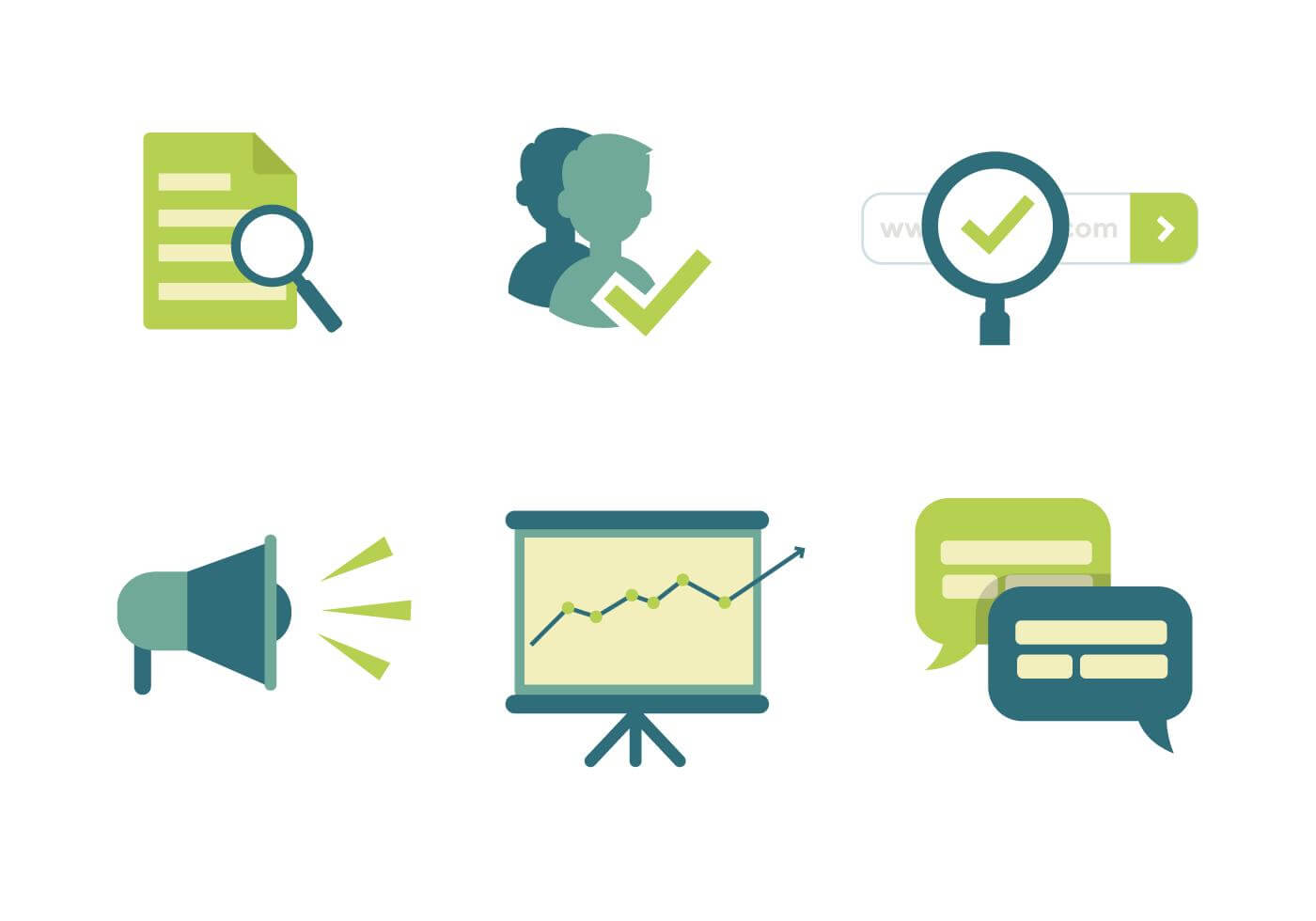
Each of these strategies has respective pros and cons when helping you identify problems worth solving. A balanced approach is recommended to ensure you capture adequate context in the problem space.
Note: Be aware of a problem related to running focus groups I call ‘group think’. This is where you don’t get adequate representation from the group and the ‘loudest voice’ seems to carry because everyone doesn’t feel comfortable expressing their feelings in a group setting. This is where one on one conversations shine.
Competitor Study
Studying competitor offerings is vital to identify problems that warrant resolution, enabling entrepreneurs to understand the current market solutions and their potential limitations. By examining competitors, entrepreneurs can recognize areas where they can offer a superior or more innovative solution to meet customer demands and resolve pain points, ultimately ensuring that their solution has a competitive edge.

Competitor study not only helps in identifying potential problems worth solving, but also assists entrepreneurs in understanding the market conditions, customer inclinations, and potential barriers to entry for given markets, which are essential components in determining the practicality and success of a business.
Pro Tip: There’s always competition. Even if it isn’t the same format as what you plan to build. If you want to build a software solution then you may be competing against another product or a service. Either way, that’s your competition. Study it because you stand to learn a whole lot from that investment.
Collaborative Problem-Solving Techniques
Entrepreneurs can encourage innovative problem-solving by employing collaborative techniques, including brainstorming sessions, design thinking, and stakeholder mapping. These approaches encourage creativity, cooperation, and reiteration, ultimately leading to innovation projects that are tailored to the needs and desires of the users.
By engaging with a diverse group of stakeholders, entrepreneurs can gain valuable insights and perspectives, helping them to identify, validate, and address problems in a more comprehensive and effective manner.
Brainstorming Sessions
Inviting various stakeholders to participate in brainstorming sessions can create a broad assortment of ideas and perspectives, ultimately leading to improved solutions. Brainstorming sessions can be conducted in-person or using online platforms to facilitate wider participation, and they can involve both individual and group brainstorming to prevent groupthink and encourage faster innovation in a psychologically safe setting.

Through brainstorming sessions, entrepreneurs can:
- Evaluate all aspects of an issue
- Encourage creative thinking
- Provide further pathways to success
- Ensure that the focus remains on the broader perspective and the problems to be solved, rather than jumping to solutions prematurely.
Design Thinking
Design thinking is a systematic and human-centric approach to problem-solving that can greatly assist entrepreneurs in recognizing issues worth addressing. The design thinking process consists of five steps:
- Empathize: Comprehend the needs and perspectives of the target users or customers.
- Define: Clearly define the problem or challenge that needs to be addressed.
- Ideate: Generate a wide range of possible solutions or ideas.
- Prototype: Create a physical or digital representation of the solution.
- Test: Gather feedback and evaluate the effectiveness of the solution.
By following these steps, entrepreneurs can uncover issues and develop innovative solutions.

Get our awesome product content delivered daily-ish to your inbox
The advantages of design thinking include:
- Promoting creativity
- Cooperation and collaboration
- Iteration and continuous improvement
- Tailoring solutions to user requirements
- Minimizing risk
- Increasing the likelihood of success
Stakeholder Mapping
Stakeholder mapping is an essential component of the problem-solving process, as it assists entrepreneurs in comprehending the people, groups, and organizations that can influence or be influenced by their project or business. By mapping out stakeholders, entrepreneurs can ascertain their requirements, expectations, and issues, which are essential in understanding the problems that are worth solving.

In order to prioritize stakeholders and ensure that their perspectives and interests are taken into account when identifying and addressing problems, entrepreneurs can engage in the following activities:
- Customer conversations
- Competitor analysis
- Brainstorming sessions
- Design thinking
- Stakeholder mapping
Reframing and Validating Identified Problems
After identifying a problem, it becomes important to reconsider its framing and confirm its significance. Reframing a problem facilitates the consideration of it from varied perspectives and ultimately leads to improved solutions. For instance, my Podcast Show Notes tool can help podcast production agencies with more than just producing great show notes in less time and budget. My software helps them scale their agencies so it goes way beyond solving each of those problems.
Validation is another crucial step in the decision making process. By challenging assumptions, evaluating market demand, and conducting product discovery, entrepreneurs can refine and validate identified problems, ensuring that their efforts are directed towards addressing pressing issues with the potential to make a real difference in their target market.
Challenging Assumptions
It’s important to identify and question risky assumptions to prevent the development of bad software. Challenging the status quo, considering unconventional approaches, and visualizing alternative solutions can help entrepreneurs challenge assumptions and discover real problems, examine novel perspectives, and devise inventive solutions to address the underlying issues.
Disregarding assumptions could result in the production of an inappropriate product or solution, expending time and resources ineffectively, and neglecting potential opportunities. By actively challenging assumptions, entrepreneurs can ensure that their efforts are focused on addressing genuine customer needs, ultimately leading to more successful and impactful solutions.
Evaluating Market Demand
Measuring potential demand for a solution is critical to guarantee it meets a legitimate target customer need.

Entrepreneurs should consider factors such as:
- The size of the target market
- The number of potential customers
- The customer’s willingness to pay
These factors are important in order to properly evaluate market demand.
Product Discovery
Product discovery involves a series of activities, such as user testing, customer interviews, and feedback collection, in order to gain insights into the needs and pain points of the target users. This process enables entrepreneurs to validate the existence and significance of a problem and prioritize and concentrate on resolving issues that have a true effect on their target market, augmenting the possibilities of creating a successful and valuable product.
For instance, in the case of Podcast Show Notes, user feedback led to modifications in the initial version of the solution, such as:
- Creating multiple title options for a podcast
- Turning episodes into social posts and marketing emails
- Creating new tiers for power users of the software
- Enabling multi-language support to broaden the target market
This example demonstrates the importance of product discovery in refining and validating identified problems to ensure the development of successful solutions, ultimately leading to a problem solved for those facing the issue.
Turning Identified Problems into Successful Solutions
After identifying, reframing, and validating a problem, the subsequent step is to convert it into a viable solution. To achieve this, entrepreneurs should focus on creating a roadmap, leveraging technology and resources, and building trust and value.
By developing a clear plan, utilizing available technology, and delivering value to customers from day one, entrepreneurs can ensure that their efforts are directed towards addressing the right problems and achieving the desired outcome, ultimately leading to a more successful and impactful business.
Creating a Roadmap
Crafting a detailed plan that outlines the steps to address the identified problem and achieve the intended outcomes is key to transforming identified problems into successful solutions. A roadmap helps to set objectives, collect inputs, and prioritize the problems that need to be solved, ensuring that the emphasis remains on the broader perspective and the predicaments to solve, instead of immediately jumping to solutions.
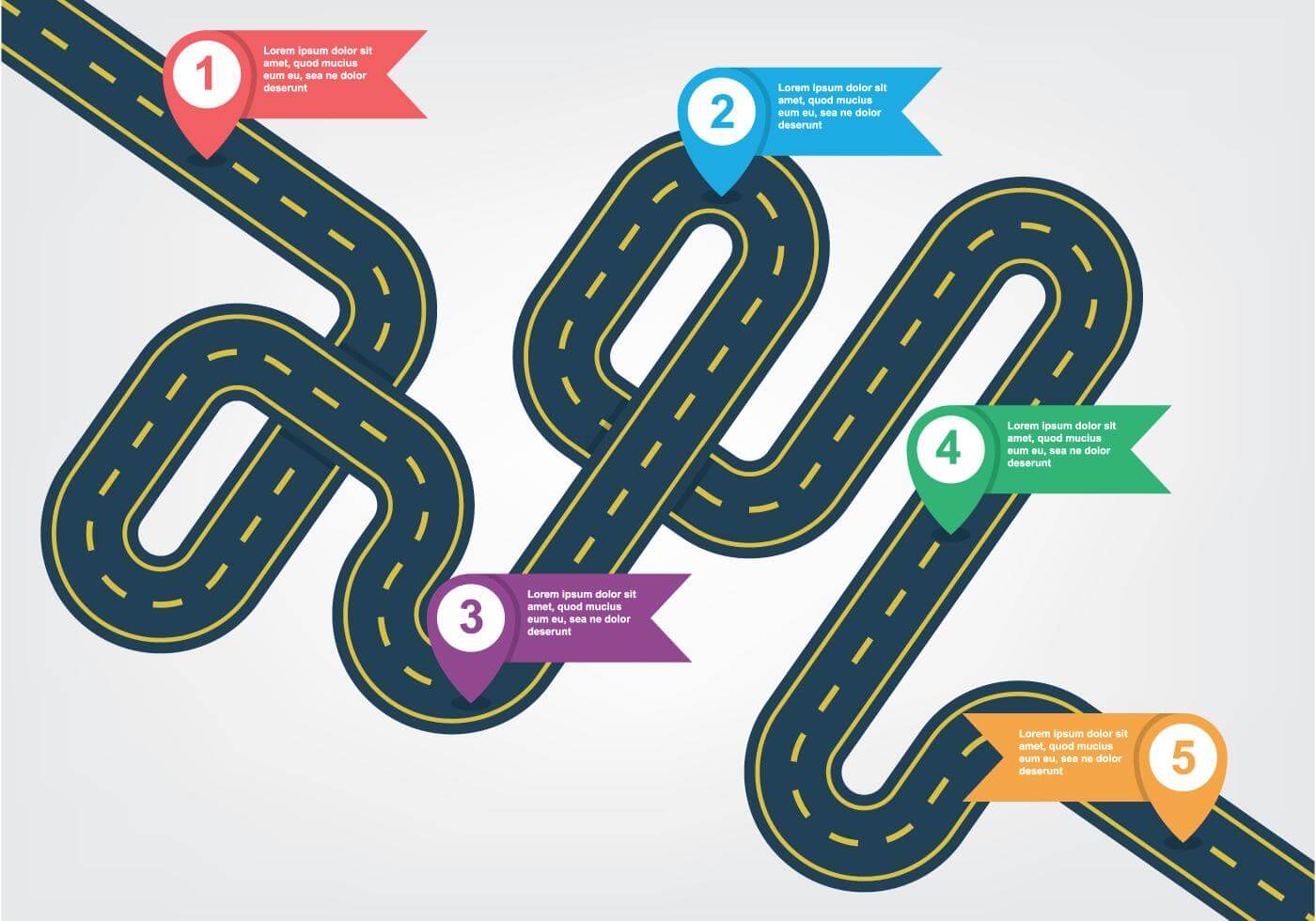
Formulating a plan of action, constructing a timeline, and establishing goals and objectives are essential components of a successful roadmap. By creating a roadmap, entrepreneurs can effectively communicate their strategic plan and coordinate resources proficiently, resulting in a greater chance of success in resolving the identified problems.
Leveraging Technology and Resources
Leveraging technology and resources plays a crucial role in boosting efficiency and productivity. Entrepreneurs have access to a plethora of online tools, software, databases, and other resources that can aid in identifying and resolving issues.

By employing technology and resources to create prototypes, evaluate solutions, and refine solutions, entrepreneurs can ensure that their efforts are directed towards addressing the right problems in the most efficient and effective manner possible. Moreover, entrepreneurs can assess their success when utilizing technology and resources by monitoring metrics such as cost savings, time savings, and customer satisfaction.
Building Trust and Value
Delivering value to customers from the outset and progressively building trust through consistent problem-solving and customer-centric strategies is vital for sustained success. Entrepreneurs may deliver value to customers from the outset by comprehending their requirements, furnishing solutions that fulfill those requirements, and delivering an excellent customer experience.

By attentively listening to customer feedback, promptly responding to customer inquiries, and providing solutions that adequately meet customer needs, entrepreneurs can establish trust through consistent problem-solving and customer-centric approaches.
Ultimately, cultivating trust and value contributes to fulfilling customer requirements, developing a competitive advantage, stimulating innovation, and producing business opportunities that can improve a customer’s circumstances.
Identifying and addressing problems worth solving is a critical aspect of successful innovation in the software space. By understanding the essence of a problem worth solving, conducting research and observation, employing collaborative problem-solving techniques, reframing and validating identified problems, and turning them into successful solutions, entrepreneurs can ensure that their efforts are directed towards the right problems and ultimately achieve success in their endeavors. By focusing on delivering value to customers and fostering trust, entrepreneurs can create lasting impact and build prosperous businesses that address genuine customer needs. If you could use help with strategy related to uncovering problems worth solving, schedule a free product strategy session with me so I can learn more about how to help.
Frequently Asked Questions
What are some problems that need to be solved.
The world faces numerous pressing issues, such as climate change, wars and military conflicts, water contamination, human rights violations, global health issues, poverty, and children’s lack of access to healthcare, education, safety, and food. Each of these need to be addressed urgently and ideally with innovative solutions.
What makes a problem worth solving?
A problem is worth solving if it has a significant negative impact on the customer’s circumstances and a better solution can provide meaningful benefits compared to existing solutions, whether for many customers or a smaller niche group.
How do I find a problem worth solving?
To find a problem worth solving, interview customers to gain insight into their pain points and day-to-day activities. Ask them questions about how often they experience the problem and how they’re trying to solve it. Then, use further customer and market research to validate your assumptions. Finally, capture early demand when you have 70% confidence in the solution.
What does it mean to identify a problem?
Problem Identification is the process of clearly identifying the root cause of a problem and developing a detailed problem statement that includes the impact. It requires analyzing the context, background, and symptoms of the issue to form a hypothesis about what is causing or maintaining the conditions around the problem. This process involves gathering data, conducting interviews, and analyzing the data to identify the root cause of the problem. Once the root cause is identified, a problem statement can be developed that outlines the scope of the problem.
What are the criteria for a problem worth solving?
For a problem to be worth solving, it must be relevant to the target customer, have potential for commercial success and be realistically solvable.
Related posts

Maximizing Impact: The Power of Generative AI for Nonprofits

The Ultimate Guide to Effective SaaS Google Ads: Tips, Tricks, and Examples

The Ultimate Guide to Software Advertising: Boost Your Marketing Strategy
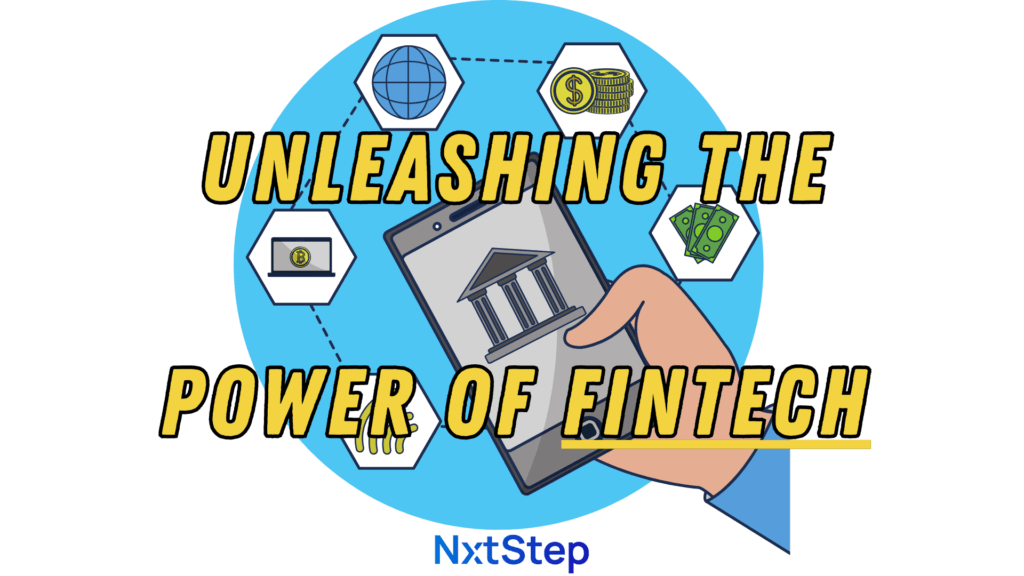
Unleashing the Power of Fintech: How Financial Technology Is Revolutionizing Our Lives

An In-Depth Guide to the Product Development Process

Find the Right SaaS Consultant for Your Business

- school Campus Bookshelves
- menu_book Bookshelves
- perm_media Learning Objects
- login Login
- how_to_reg Request Instructor Account
- hub Instructor Commons
- Download Page (PDF)
- Download Full Book (PDF)
- Periodic Table
- Physics Constants
- Scientific Calculator
- Reference & Cite
- Tools expand_more
- Readability
selected template will load here
This action is not available.

3.2: Problem-Solving to Find Entrepreneurial Solutions
- Last updated
- Save as PDF
- Page ID 62755
LEARNING OBJECTIVES
By the end of this section, you will be able to:
- Define problem-solving in the context of entrepreneurship
- Describe and compare the adaptive model and the innovative model of problem-solving
- Identify the skills entrepreneurs need for effective problem solving
- Identify types of problem solvers
As you’ve learned, entrepreneurs often visualize an opportunity gap, a gap between what exists and what could exist, as Hirabayashi and Lidey did with Shine. Entrepreneurial problem-solving is the process of using innovation and creative solutions to close that gap by resolving societal, business, or technological problems. Sometimes, personal problems can lead to entrepreneurial opportunities if validated in the market. The entrepreneur visualizes the prospect of filling the gap with an innovative solution that might entail the revision of a product or the creation of an entirely new product. In any case, the entrepreneur approaches the problem-solving process in various ways. This chapter is more about problem-solving as it pertains to the entrepreneur’s thought process and approach rather than on problem-solving in the sense of opportunity recognition and filling those gaps with new products.
For example, Sara Blakely (as shown in Figure 3.2.1) saw a need for body contouring and smoothing undergarments one day in the late 1990s when she was getting dressed for a party and couldn’t find what she needed to give her a silhouette she’d be pleased with in a pair of slacks. She saw a problem: a market need. But her problem-solving efforts are what drove her to turn her solution (Spanx undergarments) into a viable product. Those efforts came from her self-admitted can-do attitude: “It’s really important to be resourceful and scrappy—a glass-half-full mindset.” 1 Her efforts at creating a new undergarment met resistance with hosiery executives, most of whom were male and out of touch with their female consumers. The hosiery owner who decided to help Blakely initially passed on the idea until running it by his daughters and realizing she was on to something. That something became Spanx, and today, Blakely is a successful entrepreneur. 2

Before getting into the heart of this chapter, we need to make a distinction: Decision making is different from problem-solving . A decision is needed to continue or smooth a process affecting the operation of a firm. It can be intuitive or might require research and a long period of consideration. Problem-solving, however, is more direct. It entails the solution of some problem where a gap exists between a current state and a desired state. Entrepreneurs are problem solvers who offer solutions using creativity or innovative ventures that exploit opportunities. This chapter focuses on different approaches to problem-solving and need recognition that help potential entrepreneurs come up with ideas and refine those ideas.
Two Problem Solving Models: Adaptive and Innovative
There are two prominent established problem-solving models: adaptive and innovative . A renowned British psychologist, Michael Kirton, developed the Kirton Adaption-Innovation (KAI) Inventory to measure an individual’s style of problem-solving. 3 Problem-solving preferences are dependent on the personality characteristics of originality, conformity, and efficiency, according to Kirton. The KAI inventory identifies an individual’s problem-solving approach by measuring agreement with statements that align with characteristics, such as the ability to produce many novel ideas, to follow rules and get along in groups, and to systematically orient daily behavior. The results categorize an individual as an innovator or an adaptor. Innovators are highly original, do not like to conform, and value efficiency less than adaptors.
The first and more conservative approach an entrepreneur may use to solve problems is the adaptive model. The adaptive model seeks solutions for problems in ways that are tested and known to be effective. An adaptive model accepts the problem definition and is concerned with resolving problems rather than finding them. This approach seeks greater efficiency while aiming at continuity and stability. The second and more creative approach is the innovative model of entrepreneurial problem solving, which uses techniques that are unknown to the market and that bring advantage to an organization. An innovative problem-solving style challenges the problem definition, discovers problems and avenues for their solutions, and questions existing assumptions—in a nutshell, it does things differently. It uses outside-the-box thinking and searches for novel solutions. Novelty is a shared trait of creative entrepreneurship, and it’s why entrepreneurs gravitate toward this method of problem-solving. According to Dr. Shaun M. Powell, a senior lecturer at the University of Wollongong, Australia: “Creative entrepreneurs are notable for a distinctive management style that is based on intuition, informality and rapid decision making, whereas the more conventional thinking styles are not in accord with the unique attributes of creative entrepreneurs.” 4 This way of problem-solving doesn’t alter an existing product. It is the creation of something entirely new.
For example, healthcare facilities have long been known as a source of methicillin-resistant Staphylococcus aureus (MRSA), a deadly infection that can have long-term effects on patients. Vital Vio, led by Colleen Costello, has developed white light technology that effectively disinfects healthcare facilities by targeting a molecule specific to bacteria. The light, safe to humans, can burn constantly to kill regenerative bacteria. An adaptive problem-solving model would seek to minimize harm of MRSA within a hospital—to respond to it—whereas the Vital Vio is an entirely new technique that seeks to eliminate it. Adaptive solutions to MRSA include established processes and protocols for prevention, such as having doctors, nurses, and other healthcare providers clean their hands with soap and water, or an alcohol-based hand rub before and after patient care, testing patients to see if they have MRSA on their skin, cleaning hospital rooms and medical equipment, and washing and drying clothes and bed linens in the warmest recommended temperatures. 5
LINK TO LEARNING
Visit Inc. Magazine for support and advice for up-and-coming startups to learn more. Examples of how “Dorm Room” entrepreneurs spot and pursue opportunities are shared along with tips and advice for making your startup a success.
Problem-Solving Skills
While identifying problems is a necessary part of the origin of the entrepreneurial process, managing problems is an entirely different aspect once a venture is off the ground and running. An entrepreneur does not have the luxury of avoiding problems and is often responsible for all problem-solving in a startup or other form of business. There are certain skills that entrepreneurs possess that make them particularly good problem solvers. Let’s examine each skill (shown in Figure 3.2.2).

Critical Thinking
Critical thinking is the complex analysis of a problem or issue with the goal of solving the problem or making a decision. The entrepreneur analyzes and peels away the layers of a problem to find the core of an issue facing a business. The entrepreneur focuses on the heart of the problem and responds reasonably and openly to suggestions for solving it. Critical thinking is not only important for developing entrepreneurial ideas: it is a sought-after asset in education and employment. Entrepreneur Rebecca Kantar dropped out of Harvard in 2015 to found the tech startup Imbellus, which aims to replace standardized college admissions tests like the SAT with interactive scenarios that test critical-thinking skills. Many standardized tests may include multiple-choice questions asking for the answer to a straightforward knowledge question or math problem. Kantar seeks to create tests that are more concerned with the analytic ability and reasoning that goes into the process of solving the problem. Imbellus says it aims to test “how people think,” not just what they know. The platform, which has not yet launched, will use simulations for its user assessments. 6
Read more about problem-solving and EnterpriseWorks/Vita’s story at Harvard Business Review .
Communication
Communication skills , the ability to communicate messages effectively to an intended recipient, are the skills entrepreneurs use to pool resources for the purposes of investigating solutions leading to innovative problem solving and competitive advantage. Good communication allows for the free association of ideas between entrepreneurs and businesses. It can illustrate a problem area or a shared vision, and seeks stakeholder buy-in from various constituencies. Networking and communication within an industry allow the entrepreneur to recognize the position of an enterprise in the market and work toward verbalizing solutions that move an organization beyond its current state. By “verbalizing,” we mean communication from and with the company/entity. Internal communications include company emails, newsletters, presentations, and reports that can set strategic goals and objectives, and report on what has been accomplished and what goals and objectives remain, so that employees within an organization are knowledgeable and can work on solving problems that remain within the organization. External communications could include press releases, blogs and websites, social media, public speeches, and presentations that explain the company’s solutions to problems. They could also be investor pitches complete with business plans and financial projections.
Ideation exercises, such as brainstorming sessions, are good communication tools that entrepreneurs can use to generate solutions to problems. Another such tool is a hackathon —an event, usually hosted by a tech company or organization, which brings together programmers and workers with other degrees of specialization within the company, community, or organization to collaborate on a project over a short period of time. These can last from twenty-four hours to a few days over a weekend. A hackathon can be an internal company-wide initiative or an external event that brings community participants together. A business model canvas and other activities, outlined in other chapters, can be used internally or externally to identify problems and work toward creating a viable solution.
Networking is an important manifestation of useful communication. What better method is there of presenting one’s concept, gaining funding and buy-in, and marketing for the startup than through building a network of individuals willing to support your venture? A network may consist of potential employees, customers, board members, outside advisors, investors, or champions (people who just love your product) with no direct vested interest. Social networks consist of weak ties and strong ties. Sociologist Mark Granovetter studied such networks back in the 1970s, and his findings still apply today, even if we include social media networks in the definition too. Weak ties facilitate flow of information and community organization, he said, whereas strong ties represent strong connections among close friends, family members, and supportive coworkers. 7 Strong ties require more work to maintain than weak ties (as illustrated by the strong lines and weak dotted lines in Figure 3.2.3) and in a business context, they don’t lead to many new opportunities. Weak ties, in contrast, do open doors in that they act as bridges to other weak ties within functional areas or departments that you might not have had access to directly or through strong ties. 8

In fact, many young entrepreneurs, including tech entrepreneur Oliver Isaacs, realize college is a great place to begin building teams. Isaacs is the founder of viral opinion network Amirite.com, which is widely credited as the place where Internet memes started and online slang got a foothold. 9 Amirite.com consists of a large network of pages and partnerships on Facebook and Instagram that reach 15 million users each month. Isaacs recommends using your alumni network to build a team and customer base for your own venture because you never know if you’re talking to a future employee or partner.
Sharing of ideas and resources is highly valued in the entrepreneurial process. Communication is a vital skill in problem-solving because the ability to identify and articulate the problem (define the problem space) is necessary to adequately address a problem. A problem can be too vague or broad or narrow. Thus, communicating the problem is important, as is conveying the solution.
Decisiveness
Decisiveness is as it sounds: the ability to make a quick, effective decision, not letting too much time go by in the process. Entrepreneurs must be productive, even in the face of risk. They often rely on intuition as well as on hard facts in making a choice. They ask what problem needs to be solved, think about solutions, and then consider the means necessary to implement an idea. And the decisions must be informed with research.
For example, as explained in Adam Grant’s book The Originals , the co-founders of Warby Parker, a venture-backed startup focused on the eyewear industry, started their company while they were graduate students. At the time they knew little about the industry, but after conducting some detailed research, they learned that the industry was dominated by one major player—Luxottica. They used this information and other data to refine their strategy and business model (focusing mainly on value, quality, and convenience via an online channel). By the time they decided to launch the business, they had thought through the key details, and they attained rapid early success. Today Warby Parker has over 100 retail stores in the US, is profitable, and is valued at almost $2 billion.
Decisiveness is the catapult to progress. Amazon founder Jeff Bezos preaches the importance of decisiveness throughout his organization. Bezos believes that decisiveness can even lead to innovation. Bezos advocates for making decisions after obtaining 70 percent of the information you need to do so: “Being wrong may be less costly than you think, whereas being slow is going to be expensive for sure,” Bezos wrote in a 2017 annual letter to stockholders. 10
Read this LinkedIn blog post on decisiveness to learn more.
Ability to Analyze Data
Data analysis is the process of analyzing data and modeling it into a structure that leads to innovative conclusions. It is one thing to amass information and statistics. It is another to make sense of that data, to use it to fill a market need or forecast a trend to come. Successful founders know how to pose questions about and make meaning out of information. And if they can’t do that themselves, they know how to bring in experts who can.
In addition to public sources of broad data, a business can collect data on customers when they interact with the company on social media or when they visit the company website, especially if they complete a credit card transaction. They can collect their own specific data on their own customers, including location, name, activity, and how they got to the website. Analyzing these data will give the entrepreneur a better idea about the interested audience’s demographic.
In entrepreneurship, analyzing data can help with opportunity recognition, creation, and assessment by analyzing data in a variety of ways. Entrepreneurs can explore and leverage different data sources to identify and compare “attractive” opportunities, since such analyses can describe what has happened, why it happened, and how likely it is to happen again in the future. In business in general, analytics is used to help managers/entrepreneurs gain improved insight about their business operations/emerging ventures and make better, fact-based decisions.
Analytics can be descriptive, predictive, or prescriptive. Descriptive analytics involves understanding what has happened and what is happening; predictive analytics uses data from past performance to estimate future performance; and prescriptive analytics uses the results of descriptive and predictive analytics to make decisions. Data analysis can be applied to manage customer relations, inform financial and marketing activities, make pricing decisions, manage the supply chain, and plan for human resource needs, among other functions of a venture. In addition to statistical analysis, quantitative methods, and computer models to aid decision-making, companies are also increasingly using artificial intelligence algorithms to analyze data and make quick decisions.
Understanding of Business and Industry
Entrepreneurs need a sound understanding of markets and industries. Often times, they are already working in a large organization when they see growth opportunities or inefficiencies in a market. The employee gains a deep understanding of the industry at hand. If the employee considers a possible solution for a problem, this solution might become the basis for a new business.
For example, consider a marketing agency that used traditional marketing for thirty years. This agency had an established clientele. An executive in the organization began studying social media analytics and social media. The executive approached the owner of the business to change processes and begin serving clients through social media, but the owner refused. Clients within the agency began to clamor for exposure on social media. The marketing executive investigated the possibility of building an agency in her locale servicing clients who wish to utilize social media. The marketing executive left the organization and started her own agency (providing, of course, that this is in compliance with any noncompete clauses in her contract). Her competitive advantage was familiarity with both traditional and social media venues. Later, the original agency started floundering because it did not offer social media advertising. Our intrepid executive purchased the agency to gain the clientele and serve those wishing to move away from traditional marketing.
A similar experience occurred for entrepreneur Katie Witkin. After working in traditional marketing roles, the University of Wisconsin-Madison graduate, pictured in Figure 3.2.4, left agency life behind four years out of college to cofound her own company, AGW Group. In 2009, Witkin had been interning at a music marketing agency that didn’t have a social media department. She knew, both from her time at college and from observing industry trends, that social media was changing the way companies connected with customers. For her own venture, she expanded the focus to all supporting brands to manage all things digital. Today, the cultural and marketing communications agency has fifteen employees and big-name clients ranging from HBO to Red Bull. 11

Resourcefulness
Resourcefulness is the ability to discover clever solutions to obstacles. Sherrie Campbell, a psychologist, author, and frequent contributor to Entrepreneur magazine on business topics, put it this way: “There is not a more useful or important trait to possess than resourcefulness in the pursuit of success. Resourcefulness is a mindset, and is especially relevant when the goals you have set are difficult to achieve or you cannot envision a clear path to get to where you desire to go. With a resourcefulness mindset you are driven to find a way. An attitude of resourcefulness inspires out-of-the-box thinking, the generation of new ideas, and the ability to visualize all the possible ways to achieve what you desire. Resourcefulness turns you into a scrappy, inventive, and enterprising entrepreneur. It places you a cut above the rest.” 12
Entrepreneurs start thinking about a business venture or startup by talking to people and procuring experts to help create, fund, and begin a business. Entrepreneurs are risk-takers, passionate about new endeavors. If they don’t have a college degree or a great deal of business experience, they understand there are many resources available to support them in the endeavor, such as the Service Corps of Retired Executives (SCORE) and the Small Business Administration (SBA). There are many sources available to fund the business with little or no debt and options. The entrepreneur follows a vision and researches opportunities to move toward a dream.
For example, in the late 1990s, Bill McBean and his business partner Billy Sterett had an opportunity to buy an underperforming auto dealership that would make their company the dominant one in the market. Neither wanting to take cash from other ventures nor wanting to borrow more money and tie themselves to more debt, the entrepreneurs were resourceful by finding another path forward to obtaining the money necessary for the acquisition they both coveted. They changed banks and renegotiated their banking payback requirements, lowering their interest payments, reducing fees, and lowering their monthly payments, ultimately freeing up a significant amount of cash that allowed them to buy the new company. 13
Types of Problem-Solvers
Entrepreneurs have an insatiable appetite for problem-solving. This drive motivates them to find a resolution when a gap in a product or service occurs. They recognize opportunities and take advantage of them. There are several types of entrepreneurial problem solvers, including self-regulators, theorists, and petitioners.
Self-Regulating Problem-Solvers
Self-regulating problem solvers are autonomous and work on their own without external influence. They have the ability to see a problem, visualize a possible solution to the problem, and seek to devise a solution, as Figure 3.2.5 illustrates. The solution may be a risk, but a self-regulating problem solver will recognize, evaluate, and mitigate the risk. For example, an entrepreneur has programmed a computerized process for a client, but in testing it, finds the program continually falls into a loop, meaning it gets stuck in a cycle and doesn’t progress. Rather than wait for the client to find the problem, the entrepreneur searches the code for the error causing the loop, immediately edits it, and delivers the corrected program to the customer. There is immediate analysis, immediate correction, and immediate implementation. The self-regulating problem solvers’ biggest competitive advantage is the speed with which they recognize and provide solutions to problems.
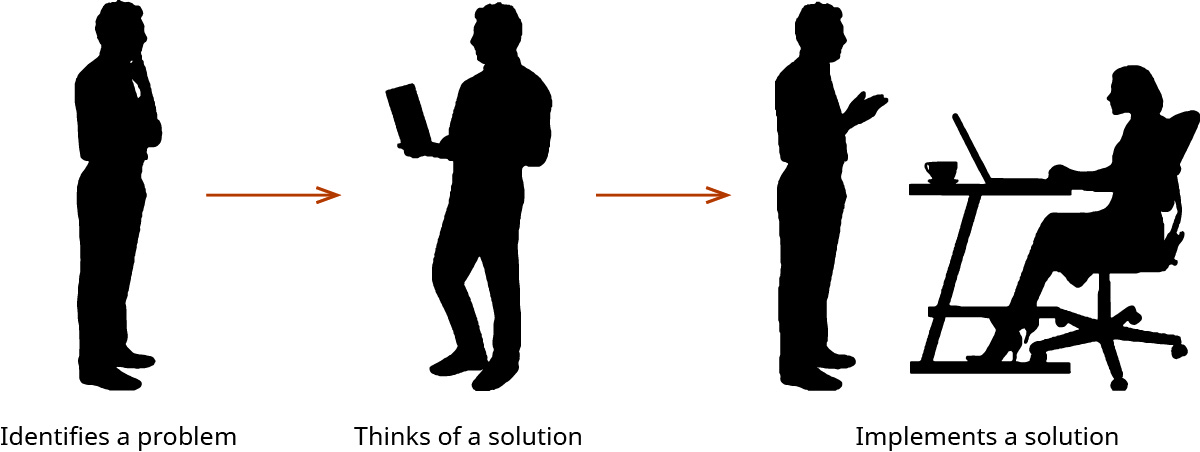
Theorist Problem Solvers
Theorist problem-solvers see a problem and begin to consider a path toward solving the problem using a theory. Theorist problem solvers are process-oriented and systematic. While managers may start with a problem and focus on an outcome with little consideration of a means to an end, entrepreneurs may see a problem and begin to build a path with what is known, a theory, toward an outcome. That is, the entrepreneur proceeds through the steps to solve the problem and then builds on the successes, rejects the failures, and works toward the outcome by experimenting and building on known results. At this point, the problem solver may not know the outcome, but a solution will arise as experiments toward a solution occur. Figure 3.2.6 shows this process.
For example, if we consider Marie Curie as an entrepreneur, Curie worked toward the isolation of an element. As different approaches to isolating the element failed, Curie recorded the failures and attempted other possible solutions. Curie’s failed theories eventually revealed the outcome for the isolation of radium. Like Curie, theorists use considered analysis, considered corrective action, and a considered implementation process. When time is of the essence, entrepreneurs should understand continual experimentation slows the problem-solving process.
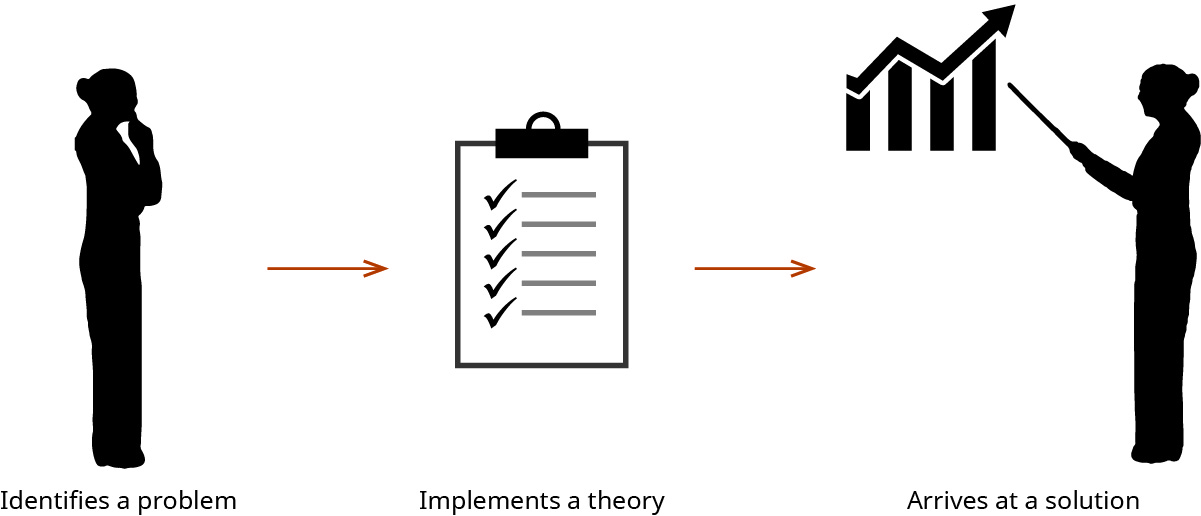
Petitioner Problem-Solvers
Petitioner problem-solvers (Figure 3.2.7) see a problem and ask others for solution ideas. This entrepreneur likes to consult a person who has “been there and done that.” The petitioner might also prefer to solve the problem in a team environment. Petitioning the entrepreneurial team for input ensures that the entrepreneur is on a consensus-driven path. This type of problem-solving takes the longest to complete because the entrepreneur must engage in a democratic process that allows all members on the team to have input. The process involves exploration of alternatives for the ultimate solution. In organizational decision-making, for example, comprehensiveness is a measure of the extent a firm attempts to be inclusive or exhaustive in its decision-making. Comprehensiveness can be gauged by the number of scheduled meetings, the process by which information is sought, the process by which input is obtained from external sources, the number of employees involved, the use of specialized consultants and the functional expertise of the people involved, the years of historical data review, and the assignment of primary responsibility, among other factors. Comprehensive decision-making would be an example of a petitioner problem-solving style, as it seeks input from a vast number of team members.
A charette —a meeting to resolve conflicts and identify solutions—is another example that employs a petitioner problem-solving approach. Often times, a developer of a new project might hold a community charette to aid in the design of a project, hoping to gain approval from elected officials. In the building example, this could consist of the developer and his team of architects, project designers, and people with expertise in the project working alongside community members, business executives, elected officials, or representatives like staff members or citizen-appointed boards like a planning board. Such an activity is representative of a petitioner problem-solving approach, as opposed to a developer representative designing the project with no input from anyone else.
In summary, there is no right or wrong style of problem-solving; each problem solver must rely on the instincts that best drive innovation. Further, they must remember that not all problem-solving methods work in every situation. They must be willing to adapt their own preference to the situation to maximize efficiency and ensure they find an effective solution. Attempting to force a problem-solving style may prevent an organization from finding the best solution. While general entrepreneurial problem-solving skills such as critical thinking, decisiveness, communication, and the ability to analyze data will likely be used on a regular basis in your life and entrepreneurial journey, other problem-solving skills and the approach you take will depend on the problem as it arises.
There are a number of resources online that can help analyze your problem-solving abilities. Mindtools.com is one such resource. These are useful to learn your general problem-solving tendencies before being called upon to apply them in a real-world setting. One of the problem-solving techniques available from mindtools.com offers that problems can be addressed from six different perspectives. Called CATWOE, the approach is an acronym for Customers, Actors (people within the organization), Transformative, Worldwide, Owner, and Environment (organizational).
Learn more about the CATWOE technique for problem-solving.
How Entrepreneurs Can Find the Right Problem to Solve
As an entrepreneur, how confident are you that you fully understand your customer’s pain points or their job to be done? Entrepreneurs I first meet tend to start selling me on their solution before explaining the problem they are trying to solve. There is little evidence that they’ve done true discovery work to validate the problem or their target customers.
While gut feel or personal experience with a problem can be a strong signal there is a problem to solve, without proper product discovery work you won’t truly know if you have a winning solution.
For those who profess having done proper discovery to validate a problem but don’t yet have a product, my follow-up question is: “How do you know people or companies will use your product?” Answers are equally discouraging. More often than not, I hear examples of interest tests, such as hits on social media posts or answers to surveys that are so biased it’s hard to trust the results. Further, entrepreneurs may have a good hunch there’s a job to be done that needs improving or replacing, but they can’t describe where in the customer journey they can truly make an impact.
I’m a big fan of confident founders who are passionate about their idea, but a little humility and a lot of discovery work can determine whether there’s a winning solution and save a lot of wasted time and money building the wrong thing. If fundraising is also a consideration, being able to have real data vs. gut feelings and biased test results can be the difference between a modest angel round and a strongly led seed- or A-round.
I’ve recently written an in-depth look at this topic, Product Discovery 101 , which I encourage you to read. Here are some highlights.
Interest vs. problem testing
“We had 1,000 clicks on our Facebook ad in the first 48 hours.”
“Our conversion rate from click to sign-up was 50 percent.”
“We interviewed a bunch of people and they said they’d use our product if we built it.”
These quotes suggest the entrepreneurs may have found an audience interested enough to click on an ad and provide an email addresses, but they still haven’t proven anything about the usefulness of their product, that it solves a real pain point, or that their target customer is willing to pay for the fix. If you plan to do interest tests, here are several approaches (among many) to consider:
- Social media . Great for finding your audience, social outreach should be done on multiple platforms and carefully crafted to answer only one or two hypotheses. These hypotheses are commonly, “Is this where we can reach this audience if we want to market to them?” and “Are they interested enough to click and learn more?”
- Website landing pages . These are the best locations to capture interest, email addresses, and demographic data. If your potential customers found you through social media tests or googling, you’ve proven they were interested enough to learn more, that your search engine optimization works, and that they trust you or care enough about the problem you wish to solve that they’ll provide insight into who they are.
- Surveys . Surveys are difficult to design and often capture random and subjective information instead of getting real data to inform your product. Great surveys are 10 questions or less, reflective in nature (“How many times did you buy “X” in the last month?”) and data-centric (“How often do you order takeout for dinner?).
Problem validation
Early in the process, more important than interest tests are tests that validate there is a problem worth solving and where exactly a product can be most successful in solving that problem. Validating hypotheses about the problem through a variety of methods is going to lead to a far better outcome than clicks on a Facebook ad.
Consider trying these different types of problem-validation tests in your discovery process:
- Interviews . Similar to surveys, interviews are as much art as science. It is incredibly easy to lead a witness, bias answers, and hear what we want to hear in an interview. The best guide for conducting a proper discovery interview is Rob Fitzpatrick’s book The Mom Test , which I encourage every entrepreneur and product manager I work with to read.
- Ethnography . Observing prospects performing the job you hope to improve or replace can be extremely insightful. You may find hacks they would never tell you about in an interview or discover a whole new set of problems in their process.
- Emotional journaling or mapping . Having a prospect journal or map out their process and highlight how they feel along the way can pinpoint exactly where they are most frustrated in their process. This is also a great technique if you can’t observe the prospect in the setting where the problem exists.
- Journey mapping . Bring together all your discovery work to identify where you found patterns of highs and lows. These may surprise you; often, where you hypothesized there was the most pain in a process may be somewhere completely different.
- (Don’t do) focus groups . I am generally not a fan of this form of discovery. It lends itself to groupthink and can produce false results. Focus groups can be useful later in the product cycle when you want to get reactions to branding or observe groups of people using your product if it’s a tangible item.
Prototype testing
The best way to validate that a problem exists is to actually insert yourself into the process and learn by doing. These tests lean toward solution building, but the idea is that you’re doing tests without building anything, or building very little, to get clarity on the problem and the customer. Common forms of these tests include:
- Lo-fidelity concierge testing . Jump right in and assume part of the role that your product might fill in the future. If you were coming up with a new restaurant reservation system, this may involve a phone conversation with the party needing a reservation and having you do the actual booking for them, perhaps even texting them to confirm their reservation. The key to success of these early tests is to resist the temptation to correct your customer—just go with them on their user experience. You can tweak things along the way as you learn more about what works and what doesn’t.
- Wizard of Oz (WoZ) testing . WoZ allows you to test a product without the need for a fully built-out prototype. The customer won’t know that you are working behind the scenes to simulate the experience. A former student of mine with a software engineering background resisted the temptation to code a solution and instead created a WoZ test by cobbling together Soundcloud, Dropbox, texting, and a high-fidelity mock front-end. After dozens of people used this method and she understood what they needed, she officially built and launched the product .
- Prototypes . Build small runs of your future product using 3D printing, sewing, or even a pop-up restaurant as ways to test your concept and receive feedback before spending too much money.
- Competitive analogs . Having target customers use existing similar products can be as telling as using the product you hope to create. Try tools like UserTesting , which allows prospects to walk through how they use a current competitive product. Having target customers use a competitive product for a week or two can also be insightful.
- Expert testing . You may be working in an area where you are no expert, but you have a hunch it’s a white space ripe for disruption. If you don’t have access to the experts or their customers, find or create a space for them to connect and observe through their experiences. This could be as simple as finding them on Quora or Reddit and looking at threads of questions that are related to what you’re exploring.
Test early, test often!
With all the options available, there is no excuse for weak validation of problems and target customers early in your product development process. One test, or even a few tests, does not qualify a product as marketable or fundable. The more objective tests you do up front, and iterate on those tests often, the higher the likelihood you’ll land on a great solution that people want to use and buy. To see my full set of recommendations, visit Product Discovery 101 .
This blog post is largely inspired by my course, PM101 at Harvard Business School. I have open-sourced the syllabus for this course here .
About the author
Julia Austin is a Senior Lecturer in the Entrepreneurial Management Unit at the Harvard Business School.
[Image by: iStock Photo ]
Other stories by Julia Austin
- Making the Right Technical Hire
- How Scale Changes a Manager's Responsibilities
- Startup or Established Company? Which Is Best for You?
Related reading from the Working Knowledge Archives
Clay Christensen’s Milkshake Marketing
Share your insights below.
- 15 Apr 2024
Struggling With a Big Management Decision? Start by Asking What Really Matters
- 24 Jan 2024
Why Boeing’s Problems with the 737 MAX Began More Than 25 Years Ago
- 25 Feb 2019
- Research & Ideas
How Gender Stereotypes Kill a Woman’s Self-Confidence
- 25 Jan 2022
More Proof That Money Can Buy Happiness (or a Life with Less Stress)
- 02 Apr 2024
- What Do You Think?
What's Enough to Make Us Happy?
- Entrepreneurship
- Independent Innovation and Invention
- Product Development
Sign up for our weekly newsletter
- Business Essentials
- Leadership & Management
- Credential of Leadership, Impact, and Management in Business (CLIMB)
- Entrepreneurship & Innovation
- Digital Transformation
- Finance & Accounting
- Business in Society
- For Organizations
- Support Portal
- Media Coverage
- Founding Donors
- Leadership Team

- Harvard Business School →
- HBS Online →
- Business Insights →
Business Insights
Harvard Business School Online's Business Insights Blog provides the career insights you need to achieve your goals and gain confidence in your business skills.
- Career Development
- Communication
- Decision-Making
- Earning Your MBA
- Negotiation
- News & Events
- Productivity
- Staff Spotlight
- Student Profiles
- Work-Life Balance
- AI Essentials for Business
- Alternative Investments
- Business Analytics
- Business Strategy
- Business and Climate Change
- Design Thinking and Innovation
- Digital Marketing Strategy
- Disruptive Strategy
- Economics for Managers
- Entrepreneurship Essentials
- Financial Accounting
- Global Business
- Launching Tech Ventures
- Leadership Principles
- Leadership, Ethics, and Corporate Accountability
- Leading with Finance
- Management Essentials
- Negotiation Mastery
- Organizational Leadership
- Power and Influence for Positive Impact
- Strategy Execution
- Sustainable Business Strategy
- Sustainable Investing
- Winning with Digital Platforms
What Is Creative Problem-Solving & Why Is It Important?

- 01 Feb 2022
One of the biggest hindrances to innovation is complacency—it can be more comfortable to do what you know than venture into the unknown. Business leaders can overcome this barrier by mobilizing creative team members and providing space to innovate.
There are several tools you can use to encourage creativity in the workplace. Creative problem-solving is one of them, which facilitates the development of innovative solutions to difficult problems.
Here’s an overview of creative problem-solving and why it’s important in business.
Access your free e-book today.
What Is Creative Problem-Solving?
Research is necessary when solving a problem. But there are situations where a problem’s specific cause is difficult to pinpoint. This can occur when there’s not enough time to narrow down the problem’s source or there are differing opinions about its root cause.
In such cases, you can use creative problem-solving , which allows you to explore potential solutions regardless of whether a problem has been defined.
Creative problem-solving is less structured than other innovation processes and encourages exploring open-ended solutions. It also focuses on developing new perspectives and fostering creativity in the workplace . Its benefits include:
- Finding creative solutions to complex problems : User research can insufficiently illustrate a situation’s complexity. While other innovation processes rely on this information, creative problem-solving can yield solutions without it.
- Adapting to change : Business is constantly changing, and business leaders need to adapt. Creative problem-solving helps overcome unforeseen challenges and find solutions to unconventional problems.
- Fueling innovation and growth : In addition to solutions, creative problem-solving can spark innovative ideas that drive company growth. These ideas can lead to new product lines, services, or a modified operations structure that improves efficiency.

Creative problem-solving is traditionally based on the following key principles :
1. Balance Divergent and Convergent Thinking
Creative problem-solving uses two primary tools to find solutions: divergence and convergence. Divergence generates ideas in response to a problem, while convergence narrows them down to a shortlist. It balances these two practices and turns ideas into concrete solutions.
2. Reframe Problems as Questions
By framing problems as questions, you shift from focusing on obstacles to solutions. This provides the freedom to brainstorm potential ideas.
3. Defer Judgment of Ideas
When brainstorming, it can be natural to reject or accept ideas right away. Yet, immediate judgments interfere with the idea generation process. Even ideas that seem implausible can turn into outstanding innovations upon further exploration and development.
4. Focus on "Yes, And" Instead of "No, But"
Using negative words like "no" discourages creative thinking. Instead, use positive language to build and maintain an environment that fosters the development of creative and innovative ideas.
Creative Problem-Solving and Design Thinking
Whereas creative problem-solving facilitates developing innovative ideas through a less structured workflow, design thinking takes a far more organized approach.
Design thinking is a human-centered, solutions-based process that fosters the ideation and development of solutions. In the online course Design Thinking and Innovation , Harvard Business School Dean Srikant Datar leverages a four-phase framework to explain design thinking.
The four stages are:

- Clarify: The clarification stage allows you to empathize with the user and identify problems. Observations and insights are informed by thorough research. Findings are then reframed as problem statements or questions.
- Ideate: Ideation is the process of coming up with innovative ideas. The divergence of ideas involved with creative problem-solving is a major focus.
- Develop: In the development stage, ideas evolve into experiments and tests. Ideas converge and are explored through prototyping and open critique.
- Implement: Implementation involves continuing to test and experiment to refine the solution and encourage its adoption.
Creative problem-solving primarily operates in the ideate phase of design thinking but can be applied to others. This is because design thinking is an iterative process that moves between the stages as ideas are generated and pursued. This is normal and encouraged, as innovation requires exploring multiple ideas.
Creative Problem-Solving Tools
While there are many useful tools in the creative problem-solving process, here are three you should know:
Creating a Problem Story
One way to innovate is by creating a story about a problem to understand how it affects users and what solutions best fit their needs. Here are the steps you need to take to use this tool properly.
1. Identify a UDP
Create a problem story to identify the undesired phenomena (UDP). For example, consider a company that produces printers that overheat. In this case, the UDP is "our printers overheat."

2. Move Forward in Time
To move forward in time, ask: “Why is this a problem?” For example, minor damage could be one result of the machines overheating. In more extreme cases, printers may catch fire. Don't be afraid to create multiple problem stories if you think of more than one UDP.
3. Move Backward in Time
To move backward in time, ask: “What caused this UDP?” If you can't identify the root problem, think about what typically causes the UDP to occur. For the overheating printers, overuse could be a cause.
Following the three-step framework above helps illustrate a clear problem story:
- The printer is overused.
- The printer overheats.
- The printer breaks down.
You can extend the problem story in either direction if you think of additional cause-and-effect relationships.
4. Break the Chains
By this point, you’ll have multiple UDP storylines. Take two that are similar and focus on breaking the chains connecting them. This can be accomplished through inversion or neutralization.
- Inversion: Inversion changes the relationship between two UDPs so the cause is the same but the effect is the opposite. For example, if the UDP is "the more X happens, the more likely Y is to happen," inversion changes the equation to "the more X happens, the less likely Y is to happen." Using the printer example, inversion would consider: "What if the more a printer is used, the less likely it’s going to overheat?" Innovation requires an open mind. Just because a solution initially seems unlikely doesn't mean it can't be pursued further or spark additional ideas.
- Neutralization: Neutralization completely eliminates the cause-and-effect relationship between X and Y. This changes the above equation to "the more or less X happens has no effect on Y." In the case of the printers, neutralization would rephrase the relationship to "the more or less a printer is used has no effect on whether it overheats."
Even if creating a problem story doesn't provide a solution, it can offer useful context to users’ problems and additional ideas to be explored. Given that divergence is one of the fundamental practices of creative problem-solving, it’s a good idea to incorporate it into each tool you use.
Brainstorming
Brainstorming is a tool that can be highly effective when guided by the iterative qualities of the design thinking process. It involves openly discussing and debating ideas and topics in a group setting. This facilitates idea generation and exploration as different team members consider the same concept from multiple perspectives.
Hosting brainstorming sessions can result in problems, such as groupthink or social loafing. To combat this, leverage a three-step brainstorming method involving divergence and convergence :
- Have each group member come up with as many ideas as possible and write them down to ensure the brainstorming session is productive.
- Continue the divergence of ideas by collectively sharing and exploring each idea as a group. The goal is to create a setting where new ideas are inspired by open discussion.
- Begin the convergence of ideas by narrowing them down to a few explorable options. There’s no "right number of ideas." Don't be afraid to consider exploring all of them, as long as you have the resources to do so.
Alternate Worlds
The alternate worlds tool is an empathetic approach to creative problem-solving. It encourages you to consider how someone in another world would approach your situation.
For example, if you’re concerned that the printers you produce overheat and catch fire, consider how a different industry would approach the problem. How would an automotive expert solve it? How would a firefighter?
Be creative as you consider and research alternate worlds. The purpose is not to nail down a solution right away but to continue the ideation process through diverging and exploring ideas.

Continue Developing Your Skills
Whether you’re an entrepreneur, marketer, or business leader, learning the ropes of design thinking can be an effective way to build your skills and foster creativity and innovation in any setting.
If you're ready to develop your design thinking and creative problem-solving skills, explore Design Thinking and Innovation , one of our online entrepreneurship and innovation courses. If you aren't sure which course is the right fit, download our free course flowchart to determine which best aligns with your goals.

About the Author

The Importance Of Problem Solving Skills For Entrepreneurs

Problem-solving is essential for entrepreneurs who want to succeed in today’s business world. Entrepreneurs face numerous challenges, and identifying and solving problems is crucial to achieving success. For that, it is crucial to have problem solving skills for entrepreneurs.
Typically, problem solving skills help to think critically and creatively to develop effective solutions to improve business performance. They also help entrepreneurs communicate effectively, lead confidently, and identify opportunities to grow their businesses.
In this blog, we will explore the importance of problem solving skills for entrepreneurs and provide practical tips and strategies to help them develop and enhance these skills.
Table of Contents
What Are The Skills Of Problem Solving?
Problem-solving skills are an essential element of successful entrepreneurship. Entrepreneurs must be able to recognize issues, evaluate them for possible remedies, and select the best one.
Creative thinking, critical thinking, and analytical skills are essential for effective problem solving. Communication and people skills are also important, as entrepreneurs need to effectively communicate their ideas and work with others to implement solutions.
Additionally, leadership skills are critical for leading teams and driving business success. The problem-solving process is key for entrepreneurs, who must identify opportunities and develop innovative solutions to drive their businesses forward.
Entrepreneurship is creating, developing, and managing a new business venture. Success requires a unique set of skills, abilities, and approaches. One of the most important skills for entrepreneurs is problem-solving. Below, we will discuss the importance of problem-solving skills for entrepreneurs and how it can impact their businesses.
Critical Thinking and Creative Problem-Solving Skills
One of the most critical elements of problem-solving is critical thinking . Entrepreneurs need to be able to analyze situations, identify problems, and develop potential solutions. This requires them to have strong analytical and creative thinking skills. They need to be able to approach problems from different angles, identify patterns, and think outside the box to find innovative solutions.
Effective Solutions and Business Performance
Effective problem-solving can significantly impact the performance of a business. Entrepreneurs who are skilled at problem-solving can identify and address issues quickly, leading to increased efficiency and productivity. They can also identify opportunities for improvement and develop new and innovative solutions to stay ahead of the competition.
Communication and Leadership Skills
Problem-solving also requires strong communication and leadership skills. Entrepreneurs need to communicate their ideas and solutions effectively to their teams, stakeholders, and customers. They need to motivate and inspire their team to take action and implement the solutions. This requires strong leadership skills, including delegating tasks and responsibilities, building a positive company culture, and leading by example.
Entrepreneurial Mindset and Opportunity Identification
Entrepreneurs with strong problem-solving skills often have an entrepreneurial mindset. They are always looking for new opportunities and ways to improve their businesses. They are unafraid to take risks and try new approaches to solve problems. This mindset is essential for identifying entrepreneurial opportunities and developing new and innovative business models.
How To Develop Problem Solving Skills For Entrepreneurs?
Entrepreneurs encounter numerous challenges while starting and managing their businesses, and the ability to solve problems creatively is an essential element of entrepreneurship. Here, we will explore different approaches entrepreneurs can use to develop their problem-solving skills.
Develop Critical Thinking Skills
Critical thinking is an essential skill for entrepreneurs to solve problems effectively. Entrepreneurs need to analyze a situation critically, identify the root cause of the problem, and evaluate potential solutions. Entrepreneurs can engage in activities such as reading challenging books, debating, and solving puzzles to improve critical thinking skills .
Enhance Creative Thinking Skill
Entrepreneurs should have the ability to think creatively when solving problems. Entrepreneurs can cultivate their creative thinking skills by exploring new experiences, brainstorming ideas, and challenging assumptions. When entrepreneurs use creative thinking, they can develop innovative solutions to complex problems.
Improve Communication and Leadership Skills
Entrepreneurs need to have excellent communication and leadership skills to solve problems effectively. Good communication skills help entrepreneurs communicate their ideas and solutions effectively to others. Similarly, leadership skills help entrepreneurs to motivate and guide their teams toward finding solutions to problem.
Think Outside the Box
Entrepreneurs can develop their problem-solving skills by thinking outside the box. When entrepreneurs use divergent thinking, they can generate many potential solutions to a problem. Entrepreneurs can develop innovative and effective solutions to complex problems by exploring different perspectives and considering unconventional solutions.
Utilize Tools and Resources
Entrepreneurs can also utilize various tools and resources to develop their problem-solving skills. These tools and resources include business books, online courses, mentorship programs, and workshops. Such resources can help entrepreneurs to learn new problem-solving techniques and strategies.
Get to Know: What Is Self Discipline In Entrepreneurship ?
Steps to Effective Problem-Solving for Entrepreneurs
Effective problem-solving is a crucial element of entrepreneurship. Successful entrepreneurs need to possess strong problem-solving skills to identify and resolve challenges in their businesses. Here are the seven steps to effective problem-solving for entrepreneurs:
Step 1: Identify the Problem
The first step in solving any problem is to identify it. Entrepreneurs should use critical thinking skills to recognize the problem and what caused it. The ability to pinpoint the problem accurately will help in developing an effective solution.
Step 2: Gather Information
Once the problem is identified, the next step is to gather as much information as possible. Entrepreneurs should use their research skills to collect data, analyze trends, and look for insights into the problem. This step provides a better understanding of the issue, which is crucial in problem-solving.
Step 3: Analyze the Problem
After gathering the relevant information, entrepreneurs should analyze the problem to determine the root cause. Analyzing the problem enables entrepreneurs to understand the situation more deeply and identify possible barriers to finding an effective solution.
Step 4: Generate Possible Solutions
The next step is to brainstorm and generate potential solutions to the problem. Entrepreneurs should use their creative thinking skills to develop innovative solutions to address the issue. There may be various approaches to solving the problem, and entrepreneurs should consider them all.
Step 5: Evaluate and Select the Best Solution
Entrepreneurs should evaluate all potential solutions to determine which ones are feasible, effective, and have the highest chances of success. They should consider the potential impact of each solution on the business and choose the best one that aligns with their business goals.
Step 6: Implement the Solution
After selecting the best solution, entrepreneurs should create a plan to implement it effectively. The implementation plan should outline the steps required to implement the solution, including the timelines and resources needed.
Step 7: Monitor and Evaluate the Solution
Once the solution is implemented, entrepreneurs should monitor its progress and evaluate its effectiveness. This step helps identify any issues that may arise during the implementation process and make adjustments as necessary. Continuous monitoring and evaluation are crucial to ensure that the solution is sustainable and effective in the long run.
Wrapping Up
The discussion above has highlighted the importance of problem solving skills for entrepreneurs. Problem-solving skills are essential to identify, analyze, and develop solutions.
Entrepreneurs must also be able to adapt to the ever-changing business landscape and come up with innovative solutions. Problem-solving skills help entrepreneurs make better decisions, improve their productivity and increase their chances of success.
Problem solving skills enable entrepreneurs to anticipate problems and take proactive steps to prevent them. Clearly, problem solving skills play a major role in the success of entrepreneurs and should be developed and practiced regularly.
Related Articles

How to Assist an Employee Who Struggles With Time management? Explained!
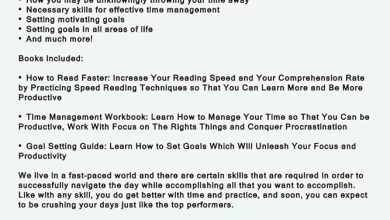
Time Management Tips for Goal Setting: Unleash Success!
How time management can reduce stress and improve your well-being.

Time Management Skills for Sales Professionals: Boosting Productivity and Closing More Deals
Leave a reply cancel reply.
Your email address will not be published. Required fields are marked *
Save my name, email, and website in this browser for the next time I comment.
Table of Contents
Why do Entrepreneurs Need to be Good Problem Solvers?+ Tips
Why do entrepreneurs need to be good problem solvers?
This question is like asking why do fish need to swim or birds need to fly? Problem-solving is in the very DNA of entrepreneurship. It’s what drives entrepreneurs to start businesses, to innovate, to grow and reach success.
But why is problem solving so important for entrepreneurs?
In this article, we’ll explore the importance of problem solving skills for entrepreneurs . Not only that, we’ll share expert tips to sharpen your problem-solving skills.
This isn’t just a read; it’s your ticket to mastering the art of entrepreneurial innovation.
So are you ready to unravel the secrets of “why do entrepreneurs need to be good problem solvers”?
What are Problem Solving Skills?
Problem-solving skills are the ability to identify and solve problems effectively. First you have to understand the problem and then generate possible solutions. Then you evaluate the solutions and select the best solution.
Problem-solving skills are essential for everyone. But they are especially important for business success. But why do entrepreneurs need to be good problem solvers? Let’s take a closer look:
Why do Entrepreneurs need to be good problem solvers: 5 Key Reasons
The importance of problem solving skills for entrepreneurs can not be over stated. In order to build a successful business, entrepreneurs need to be able to identify and solve the problems that they face along the way. Here are 5 key reasons on why do entrepreneurs need to be good problem solvers:
To identify and seize opportunities.
Entrepreneurs have to look for unmet needs in the market. And then develop solutions to those needs. This means they need a deep understanding of customer problems and come up with creative solutions.
Successful entrepreneurs know when there is a need for a new type of product or service. Or that there is a way to improve an existing product or service.
To overcome challenges.
Entrepreneurs inevitably face challenges like financial setbacks, product failures, and team conflicts. They need to be able to identify the root cause of these problems. And then develop and implement effective solutions.
For example, one of their product doesn’t sell as well as expected. Entrepreneurs need to be able to identify the reason for this. It could be because of poor marketing or a problem with the product itself.
Once they have identified the problem, they can develop a solution. This could include improving their marketing strategy or upgrading the product.
To make informed decisions .
Entrepreneurs need to be able to collect and analyze data to make informed decisions about their businesses. This includes making decisions about product development , marketing, and staffing.
For example, an entrepreneur might need to decide whether to launch a new product or expand into a new market. They need to be able to collect data on the potential demand for the product or service in the new market, and then use that data to make an informed decision.
To build and lead teams . Entrepreneurs need to be able to build and lead high-performing teams. This requires the ability to identify and solve problems that may arise within the team, such as communication problems, conflict, and low morale. For example, an entrepreneur might need to deal with a conflict between two team members, or they might need to motivate a team that is feeling discouraged.
To adapt to change . The business world is constantly changing, so entrepreneurs need to be able to adapt to change quickly and effectively. This requires the ability to identify and solve problems that arise as a result of change. For example, an entrepreneur might need to adapt their business model to a new technological development , or they might need to deal with a change in customer preferences .
By developing and improving your problem-solving skills, you as an entrepreneur will be better equipped to overcome challenges, make informed decisions, and build a successful business.
You may also like: How to Develop the Essential Skills for Success
Different Types of Problem Solving Skills Entrepreneurs Need
Entrepreneurs need a variety of problem-solving skills to be successful. Here are some of the most important types of problem solving skills for entrepreneurs:
- Analytical skills : Entrepreneurs need to be able to collect and analyze data to identify the root cause of problems. This includes being able to understand financial statements, market research data, and customer feedback.
- Creative thinking skills : Entrepreneurs need to be able to think outside the box and come up with new and innovative solutions to problems. This is important for developing new products and services, finding new markets, and overcoming challenges.
- Decision-making skills : Entrepreneurs need to be able to make quick and decisive decisions, even under pressure. They need to be able to weigh the pros and cons of different options and choose the best course of action.
- Communication skills : Entrepreneurs need to be able to communicate their ideas and solutions to others clearly and effectively. This is important for building relationships with customers, investors, and employees.
- Collaboration skills : Entrepreneurs need to be able to work with others to solve problems. This includes being able to delegate tasks, build consensus, and resolve conflict.
In addition to these general problem-solving skills, entrepreneurs may also need specific problem-solving skills depending on their industry or business model. For example, an e-commerce entrepreneur may need to have strong skills in web development and customer service, while a manufacturing entrepreneur may need to have strong skills in supply chain management and quality control.
The Process of Problem Solving for Entrepreneurs
The process of problem solving for entrepreneurs can be broken down into the following steps:
- Identify the problem. The first step in solving any problem is to identify it clearly. What is the problem? What are the symptoms? When did the problem start? Where is it happening? Who is affected?
- Gather information. Once you have identified the problem, you need to gather as much information as possible about it. This may include talking to customers, employees, or suppliers. You may also need to collect data, such as financial data or customer feedback.
- Analyze the information. Once you have gathered information, you need to analyze it to identify the root cause of the problem. What factors are contributing to the problem? What are the possible solutions?
- Generate solutions. Once you have identified the root cause of the problem, you can start to generate possible solutions. Brainstorm a list of all the possible solutions, no matter how crazy they seem.
- Evaluate the solutions. Once you have a list of possible solutions, you need to evaluate them to determine which one is the best. Consider the costs, benefits, and risks of each solution.
- Implement the solution. Once you have selected the best solution, you need to implement it. This may involve making changes to your business processes, products, or services.
- Monitor the results. Once you have implemented the solution, you need to monitor the results to ensure that it is working as expected. If the solution is not working, you may need to go back to the previous steps and try a different solution.
Here are some tips for problem solving for entrepreneurs:
- Be proactive. Don’t wait until you have a problem to start solving it. Look for potential problems and develop solutions before they become major problems.
- Be creative. Don’t be afraid to think outside the box when coming up with solutions. The best solutions are often the ones that no one else has thought of.
- Be persistent. Don’t give up if the first solution doesn’t work. Keep trying until you find a solution that works.
- Be flexible. Things don’t always go according to plan, so be prepared to adjust your solutions as needed.
- Be positive. A positive attitude will help you to stay motivated and focused on solving the problem.
You may also like: Importance of Life Skills and How to Develop 6 Essential Ones
How to Develop Problem Solving Skills for Entrepreneurs
Here are some tips on how to develop problem solving skills for entrepreneurs:
- Practice regularly. The more you practice solving problems, the better you will become at it. You can practice by solving problems in your own business, or by volunteering to help others solve their problems.
- Challenge yourself. Don’t be afraid to take on difficult problems. The more challenging the problem, the more you will learn.
- Develop a deep understanding of your business. The better you understand your business, the better equipped you will be to identify and solve problems. Make sure to regularly review your business plan, financial statements, and customer feedback.
- Seek feedback. Ask others for feedback on your problem-solving skills. This can help you to identify areas where you need to improve.
- Learn from your mistakes. Everyone makes mistakes. When you make a mistake, don’t beat yourself up about it. Instead, learn from your mistake and try to avoid making it again in the future.
Also Discover How to Develop Interpersonal Skills: 12 Tips with Examples
Key Takeaways: Why do Entrepreneurs Need to be good Problem Solvers?
In the world of entrepreneurship, problem solving isn’t an option; it’s the very core of success. As we conclude this exploration into why do entrepreneurs need to be good problem solvers, it’s clear that these skills are the secret sauce that turns challenges into opportunities. By recognizing, analyzing, and creatively addressing problems, entrepreneurs unlock their full potential.
But here’s the real power: entrepreneurship problem solving is a skill that can be developed, honed, and mastered. With determination and the right tools, you can transform into the problem-solving entrepreneur that your business needs.
So, take these insights, embrace the challenges, and let your journey as a problem solving entrepreneur flourish. Your success story begins with each problem you solve.
As we’ve come to an end to this exploration on why do entrepreneurs need to be good problem solvers, we would like to invite you to keep pace with our website The Futuristic Minds , where we unravel the puzzles of tech advancements , the intricacies of finance , guide your career journey, and illuminate the path to an awe-inspiring future. Stay curious, stay informed.
Explore Web Stories and Blogs on futuristic things!
Is problem solving and conflict resolution the same?
No, problem-solving and conflict resolution are related, but not the same. Problem-solving focuses on addressing challenges or issues, while conflict resolution specifically deals with managing and resolving conflicts between individuals or groups.
Can problem solving be learned?
Yes, problem-solving can be learned. It’s a skill that can be honed through practice, experience, and the development of critical thinking, creativity, and analytical abilities.
Why is problem solving important for entrepreneurs?
The importance of problem solving skills for entrepreneurs can not be overstated, as it helps them navigate uncertainties, drive innovation, make effective decisions, adapt to change, and ensure resource efficiency in a dynamic business landscape.
What are the key benefits of being a good problem solver as an entrepreneur?
Being a proficient problem solver empowers entrepreneurs to overcome challenges, drive innovation, adapt to change, make effective decisions, and optimize resource use, contributing to business success and sustainability.
Share this article:
Related posts.
19 Essential Life Skills For Teens: Future-Proofing Hacks
Importance of Life Skills & How To Develop 6 Essential Ones
12 Practical Skills That WILL Make You More Employable!
How To Improve Interpersonal Skills: 12 Tips With Examples
Interpersonal and Intrapersonal Skills: Master Them Both
10 Most Profitable Skills To Learn At Home: Make More Money
Leave a comment cancel reply.
Your email address will not be published. Required fields are marked *
Save my name, email, and website in this browser for the next time I comment.
Notify me of new posts by email.
Discover more from The Futuristic Minds
Subscribe now to keep reading and get access to the full archive.
Type your email…
Continue reading
Problem-Solving in Business: PROBLEM-SOLVING DEFINED AND WHY IT IS IMPORTANT
- ABOUT THIS LIBGUIDE
- PROBLEM-SOLVING DEFINED AND WHY IT IS IMPORTANT
- SKILLS AND QUALIFICATIONS NEEDED IN PROBLEM-SOLVING
- PROBLEM-SOLVING STEPS
- CASE STUDIES
- MORE HELPFUL RESOURCES

- << Previous: ABOUT THIS LIBGUIDE
- Next: SKILLS AND QUALIFICATIONS NEEDED IN PROBLEM-SOLVING >>
- Last Updated: Mar 23, 2024 4:47 PM
- URL: https://libguides.nypl.org/problem_solving_in_business

Where Entrepreneurs Find Inspiration
Ideas and Research from Stanford University
Entrepreneurship as Problem-Solving
Spotify Co-Founder Daniel Ek shares his very early experiences with entrepreneurship, which came about due to a need to solve problems. Ek also provides his definition of an entrepreneur, as “someone that has an itch for a problem, and is annoyed enough by that problem to seek a solution for it.”
Video clips from: A Playlist for Entrepreneurs [Entire Talk]
Execution is 95 percent, the big, hairy, audacious goal of spotify, solving a world of product problems, leading distributed teams, don't say yes to everything, opportunities in sensors and smart devices, product innovations can reduce piracy.

The Ethics of Innovation [Entire Talk]
Video clips.

Leadership in a Digital World
The duty of digital leaders, ethics in emerging technologies, disproportionate job displacement.

A Brainy Approach to Innovation [Entire Talk]

Embodying Innovation
Mind control of machines, pivoting toward impact, automating legal consulting, confessions of a ‘cyber-optimist'.

Taking a Lead From Tech [Entire Talk]

‘What Would Different Look Like?'
Realities of startup life, essential but unsung skills, a blank invitation, choose your peers wisely.
- Starting a Business
- Growing a Business
- Small Business Guide
- Business News
- Science & Technology
- Money & Finance
- For Subscribers
- Write for Entrepreneur
- Entrepreneur Store
- United States
- Asia Pacific
- Middle East
- South Africa
Copyright © 2024 Entrepreneur Media, LLC All rights reserved. Entrepreneur® and its related marks are registered trademarks of Entrepreneur Media LLC
Entrepreneurs Solve Problems Differently Than Other Professionals. Really! Here Are the 6 Ways. Entrepreneurs stay calm. They adapt. They work from the general to the specific. And more.
Oct 30, 2017
Problem-solving is one of the most important aspects of entrepreneurship. As both the founder of your organization and the leader of your team, you'll be responsible for identifying and solving the problems of your customers, partners, employees and your company, in general.
Related: Don't Just Start a Business, Solve A Problem
The question might be posed as to whether successful entrepreneur-problem-solvers use their natural talents to find success, or whether those skills are cultivated after years of experience . But, either way, I would maintain that successful entrepreneurs think about and solve problems differently from most other professionals.
How is this problem solving process distinctive, and how can you apply that difference to your own work habits? And what's different about entrepreneurs-as-problem-solvers in the first place? Here are six ways:
1.They identify problems first.
Some people think of entrepreneurial types as creative inventors; given a blank canvas, they can come up with a product that people will love. But that's not usually the case. Instead, the most successful entrepreneurs are those who first identify a key problem in the market, then work to solve that problem.
Airbnb, for example, started when its two founders, Brian Chesky and Joe Gebbia, realized that two problems existed in the same business area ; one, they themselves were having trouble affording rent in New York; and two, nearly all the hotel rooms in the city were consistently booked. Those founders didn't come up with their idea out of thin air; they recognized two key problems, and devised a solution to solve both simultaneously.
2.They stay calm.
According to a study by TalentSmart , 90 percent of top performers are able to manage their emotions successfully when they experience high levels of stress. This isn't a coincidence: When you allow your emotions to get the better of you when facing a problem, you subject yourself to reactive decision-making, and lose touch with your logical side. Accordingly, you make poorer decisions, and in some cases, may look bad in front of your employees.
Of course, "staying calm" when you face a major issue is, itself, a major issue. It takes years of practice and self-discipline to learn how to prevent your emotions from taking over. You need the kind of perspective that only high-stress experiences can give you. That perspective? No problem, by itself, is unconquerable or incapable of being solved through alternative approaches.
3.They start with the general and work toward the specific.
When addressing a problem, most people get caught up in the details, but successful entrepreneur-strategists tend to think about problems more generally before working down to the specific details. For example, if entrepreneurs' cars break down on the side of the road, they aren't immediately concerned with the peculiarities of the engine that led to its malfunction; instead, they recognize that the car isn't drivable, and work to get it to the shoulder -- and safety.
Related: 8 Problem-Solving Practices That See Startups to Success
This approach helps you see the high-level nature (and consequences) of your current problem, giving you a reliable context for solving it.
4.They adapt.
Successful entrepreneurs are also willing to adapt to solve a problem; they aren't beholden to the image, processes or lines of thinking that got them into the problem in the first place.
For example, Nokia -- probably best known as the top cell phone provider in the world between 1998 and 2012 -- started out as a paper company that later transitioned to producing rubber tires and galoshes (as the needs of its customers changed). When the demand rose for military and emergency service radio phones, Nokia transitioned again and started making those devices, eventually selling off its paper and rubber divisions.
In short, faced with changing available resources, market demand and competition, Nokia reinvented itself rather than remaining stagnant or applying old rubrics to new problems.
5.They delegate and distribute.
Entrepreneurs also know they aren't the most effective problem-solvers on their own; instead, most problems are best handed over to specialists who better understand those problems. Accordingly, when an entrepreneur faces a tough decision or a difficult situation, he or she typically delegates the judgment needed to an expert and calls in help to carry out that expert's solution as efficiently as possible.
Entrepreneurs also aren't afraid to delegate authority to the internal hires they trust, and aren't hesitant to spend money on external firms and consultants if that solution will solve the problem faster and more efficiently.
6.They measure outcomes and reflect.
Successful entrepreneurs actually do more than just solve the problem. After applying a fix, they spend time measuring the results of their efforts with analytics tools, and reflecting on those outcomes. Learning from the approach they've chosen, whether it turns out to be a success or failure, is what equips them to make even better decisions in the future.
So, if you aren't an entrepreneur in your own right, there's much you can gain from adopting the problem-solving tactics of someone who is -- someone who's a success at both entrepreneurship and decision-making.
Related: Entrepreneurship Is Not About Problem-Solving
Applying different modes of thinking and new leadership styles, and being open to more potential problem-solving options are the strategies that will help you solve problems more thoroughly, and reap better long-term results.
Want to be an Entrepreneur Leadership Network contributor? Apply now to join.
Editor's Pick Red Arrow
- Bantam Bagels' Founder Fell Into a Mindset Trap 'People Don't Talk About' After Selling the Now-Defunct Business for $34 Million — Here's What Happened
- Lock This Startup Wants to Grow Your Side Hustle for You , While Cutting You a Monthly Check
- I Designed My Dream Home for Free With an AI Architect — Here's How It Works
- Renowned Psychologist Adam Grant Says This 3-Step Leadership Method Will Help Fight Employee Burnout
- Lock Most Americans Don't Think Higher Education Is Worth the Cost — But This State-By-State Breakdown of College Graduates' Salaries Tells a Different Story
- Lock Watch Now: Tapping into Your Unconventional Thinking and Using It to Create a Million-Dollar Business
Most Popular Red Arrow
He took his side hustle full-time after being laid off from meta in 2023 — now he earns about $200,000 a year: 'sweet, sweet irony'.
When Scott Goodfriend moved from Los Angeles to New York City, he became "obsessed" with the city's culinary offerings — and saw a business opportunity.
Save on Business Travel with Matt's Flight's Premium, Only $80 for Life
This premium plan features customized flight deal alerts and one-on-one planning with Matt himself.
Here's One Reason Urban Transportation Won't Look the Same in a Decade
Micro-EVs may very well be the future of city driving. Here's why, and how investors can get ahead of it.
Do You Want to Live to Be 100? This Researcher Has the Answer to Why Longevity is Not a Quick Fix or Trendy Diet
Ozempic, cold plunges, sobriety and the latest health fads are not what science reveals will help you live a longer and healthier life.
Taylor Swift Is Making Vinyl Cool Again — and Profitable. Here's How Her Surprise Double Album Is Bringing Back the Old-School Medium.
One in every 15 vinyl records sold in the U.S. last year was by Taylor Swift.
Better Communicate Data with Your Team for $20 with Microsoft Visio
Visio features a wide range of diagramming tools that can support projects across all industries.
Successfully copied link

Why is decision-making important to an entrepreneur?
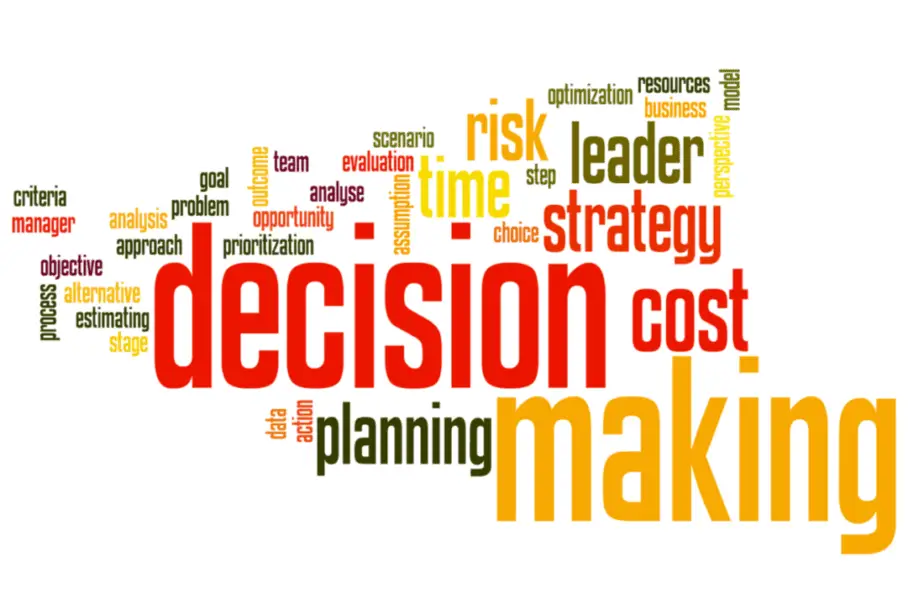
Making informed decisions is the bedrock of successful entrepreneurship. As an entrepreneur with years of experience, I understand the pivotal role that decision-making plays in shaping the trajectory of a business. It’s not just about making choices; it’s about making the right choices at the right time. In this dynamic and often unpredictable landscape, decision-making isn’t a luxury; it’s a necessity. Let’s explore why decision-making is the cornerstone of entrepreneurial achievement and how it can make or break your business aspirations.
Decision-making is the lifeblood of entrepreneurship. Every choice an entrepreneur makes, from identifying market opportunities to resource allocation and risk management, directly impacts the success of their venture. In the highly competitive and dynamic business landscape, adept decision-making is the compass that guides entrepreneurs towards their goals and helps them thrive in the face of challenges.
As we journey deeper into the realm of decision-making in entrepreneurship, you’ll discover not only the significance but also the strategies to enhance your decision-making prowess. Whether you’re just starting your entrepreneurial voyage or seeking to refine your decision-making skills, the insights ahead will provide valuable guidance. So, stay with us to unlock the secrets of effective decision-making in the entrepreneurial world.
The Essence of Decision-Making

Effective decision-making is the ability to select the best alternative among several options, considering various factors and potential outcomes. For entrepreneurs, these decisions can range from product development and market entry to financial investments and staffing. Each choice, whether big or small, shapes the trajectory of the business.
- Strategic Direction : Decisions set the strategic direction of a business. Entrepreneurs must constantly assess market trends, customer preferences, and competitive landscapes to make informed choices that keep the company on the right path. A well-timed pivot or expansion into a new market can be a game-changer.
- Resource Allocation : Resources such as time, money, and manpower are finite. Effective decision-making ensures these resources are allocated optimally, maximizing efficiency and profitability. Entrepreneurs must strike a balance between risk and reward, ensuring resources are invested wisely.
- Problem-Solving : Challenges and obstacles are inevitable in business. Decision-making equips entrepreneurs with problem-solving skills. Whether it’s resolving a production issue, managing a crisis, or addressing customer concerns, sound decision-making is essential for overcoming hurdles.
- Adaptation to Change : The business landscape is constantly evolving. Entrepreneurs must make decisions that enable them to adapt to changing market conditions. This could involve embracing new technologies, adjusting pricing strategies, or responding to shifts in consumer behavior.
- Risk Management : Entrepreneurship inherently involves risk. Decision-making involves assessing risks and taking calculated chances when necessary. Entrepreneurs must weigh potential rewards against risks, ensuring they are prepared to mitigate adverse outcomes.
- Innovation and Growth : Many groundbreaking innovations and business expansions are the result of bold decisions. Entrepreneurs who can identify opportunities and make innovative choices often experience significant growth.
- Building Trust : Consistent, well-thought-out decisions build trust among stakeholders, including employees, investors, and customers. Trust is a valuable asset that can enhance a company’s reputation and relationships.
Understanding Decision-Making
Before diving into strategies for improvement, it’s essential to understand the components of decision-making:
- Information Gathering : Effective decision-making begins with gathering relevant information. Entrepreneurs must research, analyze data, and consult experts when necessary to have a clear understanding of the choices before them.
- Risk Assessment : Decision-making involves assessing potential risks and rewards. Entrepreneurs should weigh the potential consequences of each choice and determine their risk tolerance.
- Critical Thinking : Critical thinking skills are crucial. Entrepreneurs should evaluate alternatives, consider long-term implications, and think logically.
- Emotional Intelligence : Decision-making is not purely analytical; it often involves understanding emotions. Entrepreneurs should be aware of their emotions and those of others, as emotions can influence choices.
Now, let’s explore strategies for developing these decision-making abilities:
- Continuous Learning : Stay curious and commit to lifelong learning. This includes staying updated on industry trends, understanding new technologies, and expanding your knowledge base.
- Seek Diverse Perspectives : Don’t make decisions in isolation. Seek input from mentors, advisors, and team members. Diverse perspectives can provide valuable insights and uncover blind spots.
- Practice Critical Thinking : Engage in activities that promote critical thinking, such as solving puzzles, debating, or participating in brainstorming sessions. These exercises can enhance your ability to analyze situations objectively.
- Simulate Decision-Making : Consider using decision-making simulations or case studies. These exercises allow you to practice making choices in a risk-free environment and learn from both successes and failures.
- Meditation and Mindfulness : These practices can help entrepreneurs manage stress and improve their ability to think clearly under pressure, leading to better decision-making.
- Decision Journaling : Keep a journal of your decisions and their outcomes. Reflect on what worked and what didn’t, and identify areas for improvement.
- Embrace Failure : Don’t fear failure; see it as an opportunity to learn. Analyze decisions that didn’t yield the desired results and use this knowledge to make better choices in the future.
- Set Decision-Making Criteria : Establish clear criteria for decision-making. Determine what factors are most important for your business and use these as a framework for evaluating choices.
- Feedback Loop : Create a feedback loop within your organization. Encourage open communication and feedback from your team, and be willing to adjust your decisions when new information becomes available.
- Decision Delegation : Recognize that you can’t make every decision. Delegate decisions that don’t require your direct involvement to trusted team members, empowering them and freeing up your time for more critical choices.
In the entrepreneurial world, decision-making isn’t just a skill; it’s a lifeline. The ability to make informed, strategic choices is what sets successful entrepreneurs apart. From charting the course of their businesses to navigating challenges and seizing opportunities, decision-making is the compass that guides them. Aspiring and seasoned entrepreneurs alike must recognize the importance of this skill and continually hone it to thrive in the ever-changing business landscape. In this context, decision-making becomes a skill that can be honed and refined through an understanding of its components and the implementation of improvement strategies. By embracing learning, seeking diverse perspectives, and practicing critical thinking, entrepreneurs can confidently navigate the complex entrepreneurial terrain, making it an indispensable trait for entrepreneurial success.
Matthew McFarlane
"I'm an enthusiastic blog writer who loves exploring the world of entrepreneurship. I enjoy breaking down complex business ideas into easy-to-understand articles, helping aspiring and experienced entrepreneurs find their way. My goal is to inspire creativity, share practical advice, and connect with fellow business enthusiasts."
Recent Content
Mastering Timely Strategic Planning: When to Begin.
In the world of business and beyond, strategic planning stands as the foundation for success, akin to a well-thought-out blueprint for an architect. The question that often arises is, "When should...
Types of Business Risks: Understanding the Challenges
Navigating the intricate landscape of business risks is paramount for any organization's survival and growth. In this comprehensive guide, we'll delve into the diverse categories of business risks,...
Why Decision-Making Is So Important To Entrepreneurs (And How To Improve It)
Rodney Laws

Decision making is the name of the game when you’re an entrepreneur.
Every day entrepreneurs across the globe are tasked with making decisions that could make or break the future of their business, reputation and livelihood. A good entrepreneur has to be an excellent decision-maker. That doesn’t mean they can’t make mistakes from time to time, but they need to be able to spot potentially hazardous ideas when they see them.
In this article, we’ll cover why good decision-making is so important for finding success as an entrepreneur and how you can go about improving yours.
Why it’s important
Entrepreneurs deal in good ideas.
Yes, they run businesses that sell commodities, offer services and provide real estate — but ultimately a good entrepreneur is in the business of selling ideas. Every day they need to convince investors, staff and consumers to come along on a journey with them. While their team does the heavy lifting, entrepreneurs are focused on the big picture and all the risks that come with it.
However, there are other reasons that decision-making is so crucial to effective entrepreneurship.
The risk is greater
Bad decisions can be much more damaging to entrepreneurs, particularly those just starting out.
A small-to-medium entrepreneur is always living on the edge. For some, that’s part of what’s fun about the job (and what makes the reward even sweeter). But when you live and work with this mindset, the big mistakes you make mean a whole lot more.
More often than not, entrepreneurs are staring at two options before them. One pushes the business forward to new heights, while the other could potentially lead it down a dark path that sometimes ends in closure. Of course, they’re not labeled in this way and how the idea plays out ultimately lies on you. However, when you’re building something grand, even one small mistake can bring the house of cards tumbling down.
Bad decisions don’t just lead to a financial downturn or lost progress. They lead to a loss of reputation. An entrepreneur’s reputation is everything. It’s what gets them a better deal on exclusive products, earns calls from prime investors and gets you those crucial marketing slots.
More people are relying on (and questioning) your decisions
When you progress as an entrepreneur to the point where you have your own business your decisions no longer just affect your own life and future, but those of many others.
When you make the decisions to pursue a new market, significantly up your advertising spend or more into a larger office downtown you’re not just playing with your own future of that of a back-room business. You’re playing with people’s lives.
The lives of your employees, freelancers who rely on you for regular work every year and the investors who have provided the funding to launch your operations. One wrong decision can see funds and business dry up, and before long you’re letting people go before being dragged into meetings with furious investors.
If you want to spend less time apologizing for and explaining your decisions, you better learn how to make ones that yield more positive results.
How to improve it
Now that we understand common dilemmas entrepreneurs face and why being a good decision maker is so crucial to them, let’s look at some common ways to improve the skills behind it.
Games and tests
Brain training has been a popular industry for years, as people try and find ways to improve their thinking, outlook and decision making in their personal and professional lives.
If you’re worried about your decision-making abilities, consider using your free time to sharpen them up. That doesn’t mean you have to spend your evenings buried in a textbook though.
Classic games have long been a fantastic way of improving cognitive abilities and preparing professionals for the challenges and decisions facing them in the world of work. From chess to solitaire, medical experts focused on the abilities of the mind have eulogized about the power of these games. Thanks to the internet, there are easy ways to play online solitaire games or virtual chess without the need for real-life opponents to test your wits against.
How do these games help? They force you to consider multiple scenarios and outcomes. If you’re constantly juggling five or six avenues one decision could take you down, you start to apply that thinking in real life. Business decisions become similar to considerations about whether or not you should take that pawn or block off the queen.
Do your research
Research is everything in business.
Whether it’s a buying decision or a choice of the market to target, understanding the present playing field is crucial to good decision making.
To improve your decision making you should infuse everything you do with a solid amount of research. Every product you choose to sell, every digital tool you purchase for your team, every audience you try and target — they all need to be based on solid research conducted by yourself and people you work closely with.
How does the price align with your budget and is there a long term future for this investment? These are the kinds of questions you need to answer in your research before getting your card out.
Say you were opening an ecommerce store, for example. You wouldn’t bank the future of your business on a product you didn’t understand or try selling through a platform you hadn’t taken the time to learn yet.
This kind of research can be the difference between a good investment and a very costly one.
Trust outside opinions
Even the best and brightest leaders need people to help them make the big decisions.
Whether it’s a trusted confidant or an appointed advisor, it’s great to get an outside opinion from someone you trust. Being wrapped up in your own decision making and putting immense pressure on yourself will only lead to you making a big mistake down the line . Sometimes you need the wise voice of someone you trust (or even just someone completely outside of your world) to help clear the fog and make your choice more obvious.
From friends to colleagues to mentors — we all need someone who can make decisions feel that little bit smaller. Getting into the habit of asking for advice and clarifying your choices with someone is a great way to make sure you’re never rushing into something.
You’re never going to make the right decision 100% of the time. If you did, you probably wouldn’t make a good entrepreneur. A good entrepreneur makes mistakes and learns from them. Their mistakes guide them towards that one great idea that breaks them into the big time.
Rather than trying to be perfect, it’s more important and useful to recognize the weight of your decisions and look for new ways to develop as a professional and person.

May 14, 2018
The Importance of Creative Problem-Solving in Entrepreneurship
I was a math major in college and graduate school, but certainly not a math genius. I struggled to get my graduate degree. But I learned the art and science of problem solving through mathematics. I don’t remember any of the mathematics, but I use the problem-solving skills that I learned every day.
In college, you are not given 50-100 arithmetic problems to solve. Instead, you may work on one or two problems for days or even weeks. Sometimes I would work late into the evening, go to sleep and the solution would come to me while sleeping at 3:00 am. The problem with this, of course, is that I still wake up at 3:00 am every night now. But, back to the point, I learned to solve complex problems.
There is no greater use for this skill than in entrepreneurial companies. As an entrepreneur, trying to grow you company, you are faced with a myriad of problems which might include, product problems, marketing problems, sales problems, financial problems, customer support problems, people problems, partner problems and on and on. The solution to these problems is often not easy. There are many choices and choosing the right solution for your individual situation (of the problem, the company, the resources available (etc.) are many). But building a company is solving a constant, on-going and evolving set of problems.
This is a skill that is an absolute requirement for a successful entrepreneur. But many entrepreneurs are not equipped to solve problems outside of their domain expertise. This is where companies often break. You need to know how to apply the problem-solving skill to a range of issues. So, if you have a problem, and you can’t solve it, the solution is to find someone who can.
A natural way to think about problem-solving involves curiosity. People who are naturally curious can often be very good problem solvers. They can think about what can go wrong and explore solutions to either prevent the problem or solve it if it does occur. So, it does not take the smartest person to solve a problem, it can take the most curious person to solve it. Einstein once said that there was nothing remarkable about him except for his curiosity.
There is (probably) no set plan for general problem-solving. Here are some suggestions that can help:
- Accept that problems are inevitable
- See problems as opportunity
- Truly understand the problem
- Do not over-react. Learn to objectively evaluate threats and consequences
- Break the problem down into components if possible
- Look to other industries for potential solution ideas
- Determine what you can and can’t control (make a list)
- Gather ideas from others but do not necessarily try to solve the problem using group-think
- Let ideas percolate (remember my going to sleep and having the solution come to me while sleeping)
- Establish a plan with metrics for success and timetable and plan B if plan A does not work in the established time frame
- Take bold actions
- Listen to the nay-sayers and incorporate their issues into your plan but do not get discouraged by what they say
- Relentlessly communicate your plan for solving the problem
- Get buy in from stakeholders
- Execute the plan relentlessly to the lowest level possible
- Learn from the problem to see if improvements can be made here and elsewhere to prevent future problems
But most importantly, understand the current problem and make sure that you are focusing on the problem that you actually have and not the one that you would like to have or are more comfortable solving. I have a number of customers whose challenges are clear. But they focus on what they want to do rather than what the real issue is. They either refuse to accept the problem in front of them, or, they fail to recognize it. Neither is good.
In addition, one potential downside of this is that STEM or other science-educated people, who often end up in entrepreneurship, are not equipped for the “artistic” side of problem-solving. For instance, engineers or health educators and others, like certainty and also don’t like to take risks. Problem solving in entrepreneurship is, therefore, somewhat different than problem-solving in science. You may never have certainty and you always have risk. You need creativity, some risk-taking and other skills that are uncomfortable for science or math educated people. If you are uncomfortable with uncertainty and risk, this is where having strong “artistic” people can come into play. An artistic person also solves problems and often is more creative and comfortable with risk-taking. The idea here is what I said at the beginning: “entrepreneurial problem-solving is both art and science”. So creative problem-solving is required. To achieve creativity in problem-solving, do whatever you do to get the creative juices flowing like read, play music, look at art, go for a walk, talk to others, take a nap…
In order to succeed in building a company, you need to be a relentless problem-identifier and problem-solver. In my opinion, it is the most critical skill or characteristic required of an early-stage CEO. Problems are inevitable. Seeing them as opportunities is healthy and also reduces stress since you are anticipating them rather than surprised by them. What can go wrong, will go wrong. So, buck up and try to anticipate challenges and problems before they bite you.
Here is the conclusion. Building a company is solving a series of problems across a wide range of issues. Learn to recognize and focus on the problems that are truly impacting your business, not what you are comfortable with. Accept problems, learn to deal with them and combine scientific and artistic problem-solving skills, or have a team that can work together to do that…or die. OK?
Recent TEDD Talks
The Critical Client Services Function
Using the blue ocean buyer utility map, buyer fear of change and risk, crossing the ceo chasm, 21 things that stunt your ability to scale your business, creating a blue ocean sales approach.
734.604.5417

QUICK LINKS

IMAGES
VIDEO
COMMENTS
4 Problem-Solving Skills All Leaders Need. 1. Problem Framing. One key skill for any leader is framing problems in a way that makes sense for their organization. Problem framing is defined in Design Thinking and Innovation as determining the scope, context, and perspective of the problem you're trying to solve.
In the fast-paced, ever-evolving world of business, problem-solving is more than just an essential skill; it is the very essence of entrepreneurship. Successful entrepreneurs navigate a complex ...
Entrepreneurs are problem solvers who offer solutions using creativity or innovative ventures that exploit opportunities. This chapter focuses on different approaches to problem solving and need recognition that help potential entrepreneurs come up with ideas and refine those ideas. Two Problem Solving Models: Adaptive and Innovative
Design Thinking. Design thinking is a systematic and human-centric approach to problem-solving that can greatly assist entrepreneurs in recognizing issues worth addressing. The design thinking process consists of five steps: Empathize: Comprehend the needs and perspectives of the target users or customers.
How can problem solving skills help entrepreneurs better understand their customers? Powered by AI and the LinkedIn community. 1. Identify the problem. 2. Generate ideas. 3. Evaluate and select ...
Sharing of ideas and resources is highly valued in the entrepreneurial process. Communication is a vital skill in problem-solving because the ability to identify and articulate the problem (define the problem space) is necessary to adequately address a problem. A problem can be too vague or broad or narrow.
Problem validation. Early in the process, more important than interest tests are tests that validate there is a problem worth solving and where exactly a product can be most successful in solving that problem. Validating hypotheses about the problem through a variety of methods is going to lead to a far better outcome than clicks on a Facebook ad.
It may seem like an obvious point, but problem-solving is actually going to become the core of your business building strategy. Problem-solving is literally about creating value. That value will ...
Its benefits include: Finding creative solutions to complex problems: User research can insufficiently illustrate a situation's complexity. While other innovation processes rely on this information, creative problem-solving can yield solutions without it. Adapting to change: Business is constantly changing, and business leaders need to adapt.
Involving one or more teammates in a problem-solving process may not be enough. A Harvard Business Review article highlighted two important ingredients in a winning problem-solving team. First ...
Here's how to apply the 5 Why's: Clearly define the problem: Identify what's happening and what needs to be fixed. Ask "Why" questions: Ask "Why" the problem is occurring and record the answer ...
Problem-solving skills are an essential element of successful entrepreneurship. Entrepreneurs must be able to recognize issues, evaluate them for possible remedies, and select the best one. Creative thinking, critical thinking, and analytical skills are essential for effective problem solving. Communication and people skills are also important ...
Here are 5 key reasons on why do entrepreneurs need to be good problem solvers: To identify and seize opportunities. Entrepreneurs have to look for unmet needs in the market. And then develop solutions to those needs. This means they need a deep understanding of customer problems and come up with creative solutions.
Identifying a problem and the dialogue around that problem is the first step toward becoming a solution. In your entrepreneurial journey, read magazines, newspapers, blogs, and social posts to ...
WHY IS PROBLEM-SOLVING IMPORTANT TO YOUR BUSINESS? EXAMPLES OF COMMON BUSINESS PROBLEMS: Problem-solving is important both to individuals and organizations because it enables them to exert control over their environment. * Fixing things that are broken: Some things wear out and break over time, others are flawed from day-1. Personal and ...
Creative problem-solving, a critical tool for entrepreneurs, involves tackling challenges from unique angles and innovating solutions. This approach is especially beneficial in entrepreneurship…
Daniel Ek, Spotify. Spotify Co-Founder Daniel Ek shares his very early experiences with entrepreneurship, which came about due to a need to solve problems. Ek also provides his definition of an entrepreneur, as "someone that has an itch for a problem, and is annoyed enough by that problem to seek a solution for it.".
Problem-solving is one of the most important aspects of entrepreneurship. As both the founder of your organization and the leader of your team, you'll be responsible for identifying and solving ...
Problem-solving skills are extremely important in life and more so in business. Regardless of your profession, industry or lifestyle, solving problems is part of everyday life. The entrepreneurial journey is riddled with ups and downs and my ability to solve problems has given me great success in business says Darshan Budhrani. No problem is ...
Decision-making equips entrepreneurs with problem-solving skills. Whether it's resolving a production issue, managing a crisis, or addressing customer concerns, sound decision-making is essential for overcoming hurdles. Adaptation to Change: The business landscape is constantly evolving.
Rodney Laws. Decision making is the name of the game when you're an entrepreneur. Every day entrepreneurs across the globe are tasked with making decisions that could make or break the future of their business, reputation and livelihood. A good entrepreneur has to be an excellent decision-maker. That doesn't mean they can't make mistakes ...
The idea here is what I said at the beginning: "entrepreneurial problem-solving is both art and science". So creative problem-solving is required. To achieve creativity in problem-solving, do whatever you do to get the creative juices flowing like read, play music, look at art, go for a walk, talk to others, take a nap….
3. Lack Of Profitability. A lack of sales and/or low profitability of the same is a common issue. In many cases, I find a deficient commercial policy with multiple negative aspects. First ...